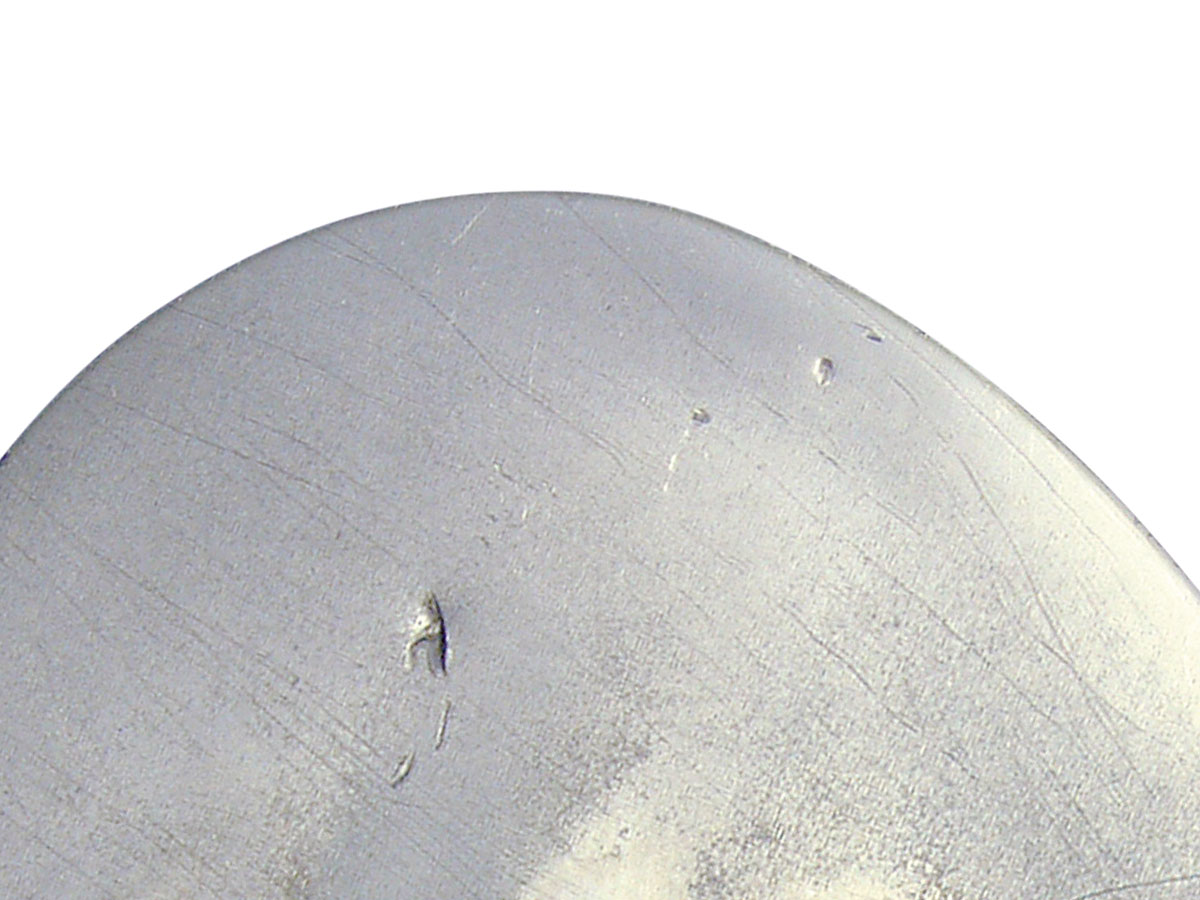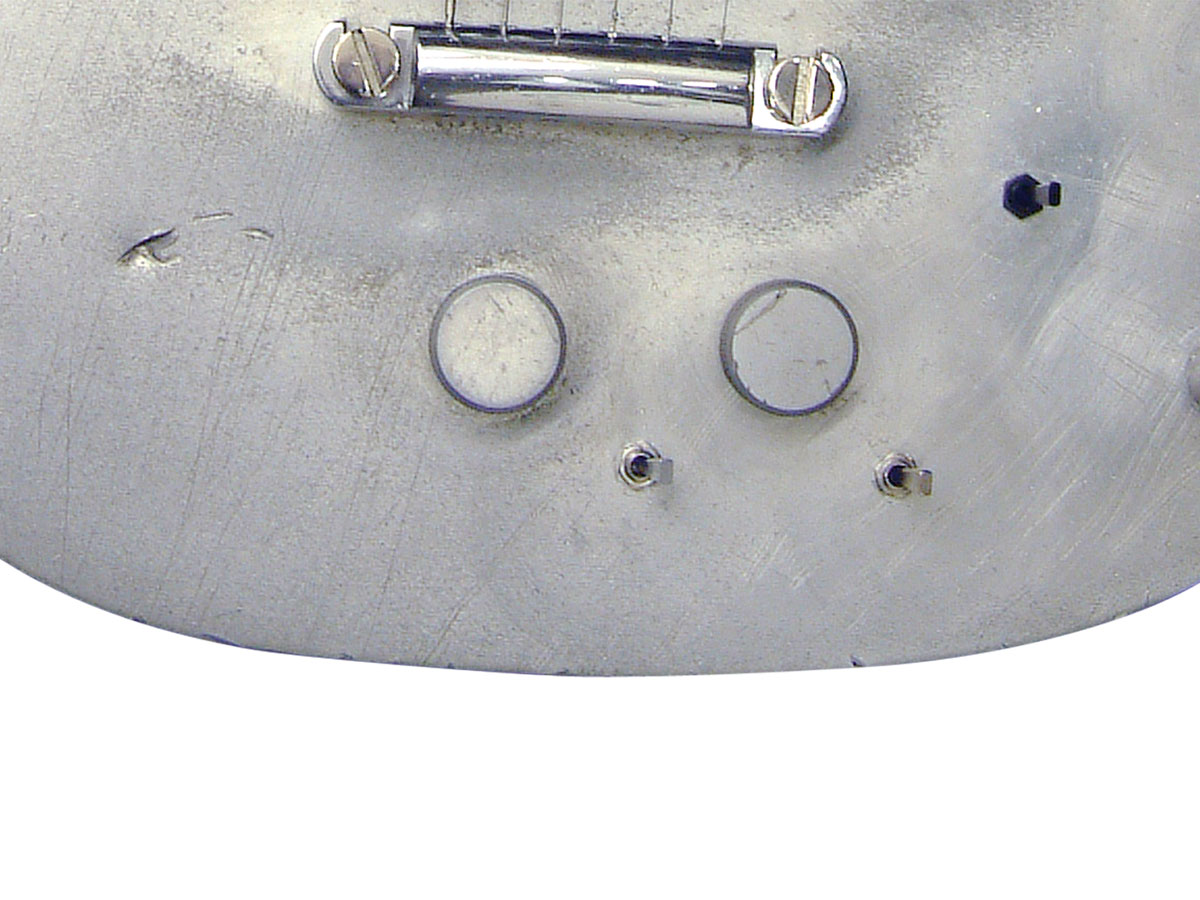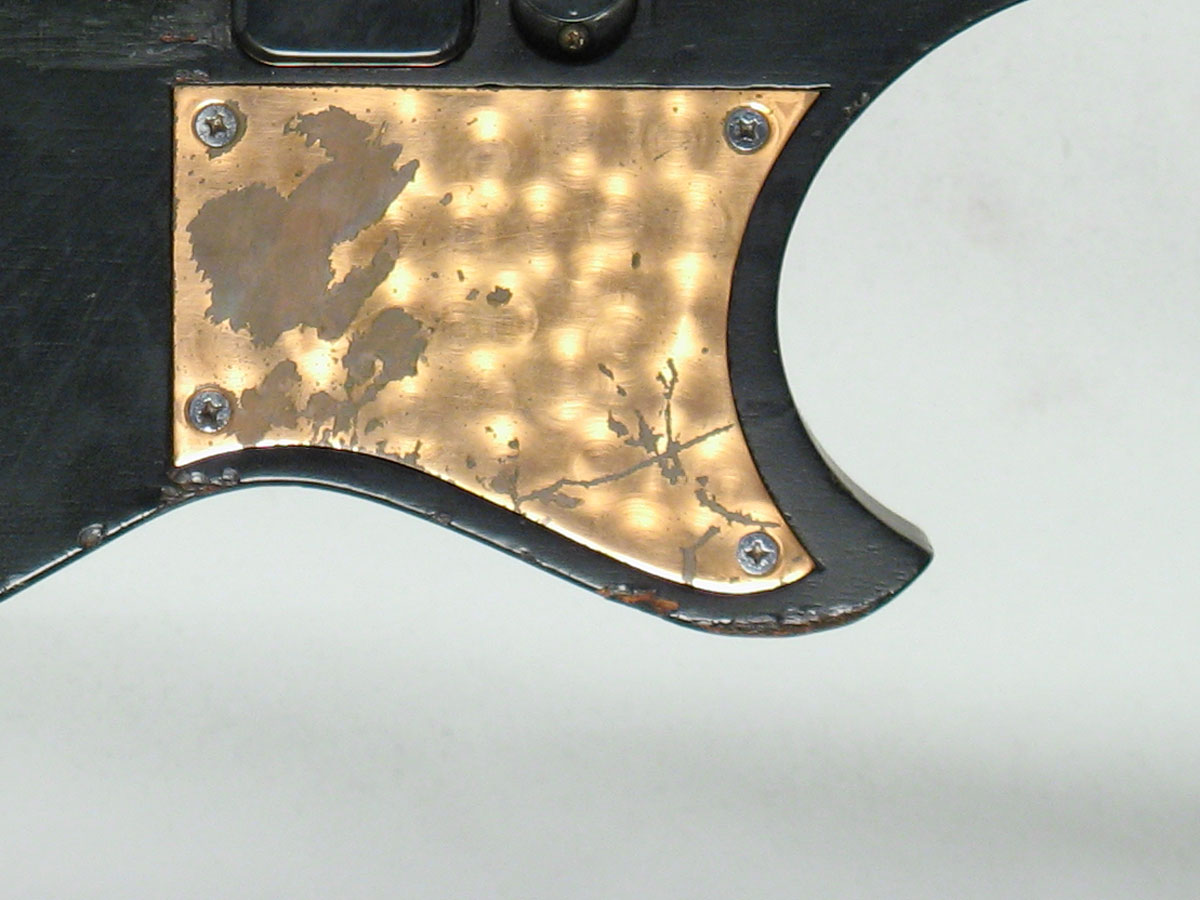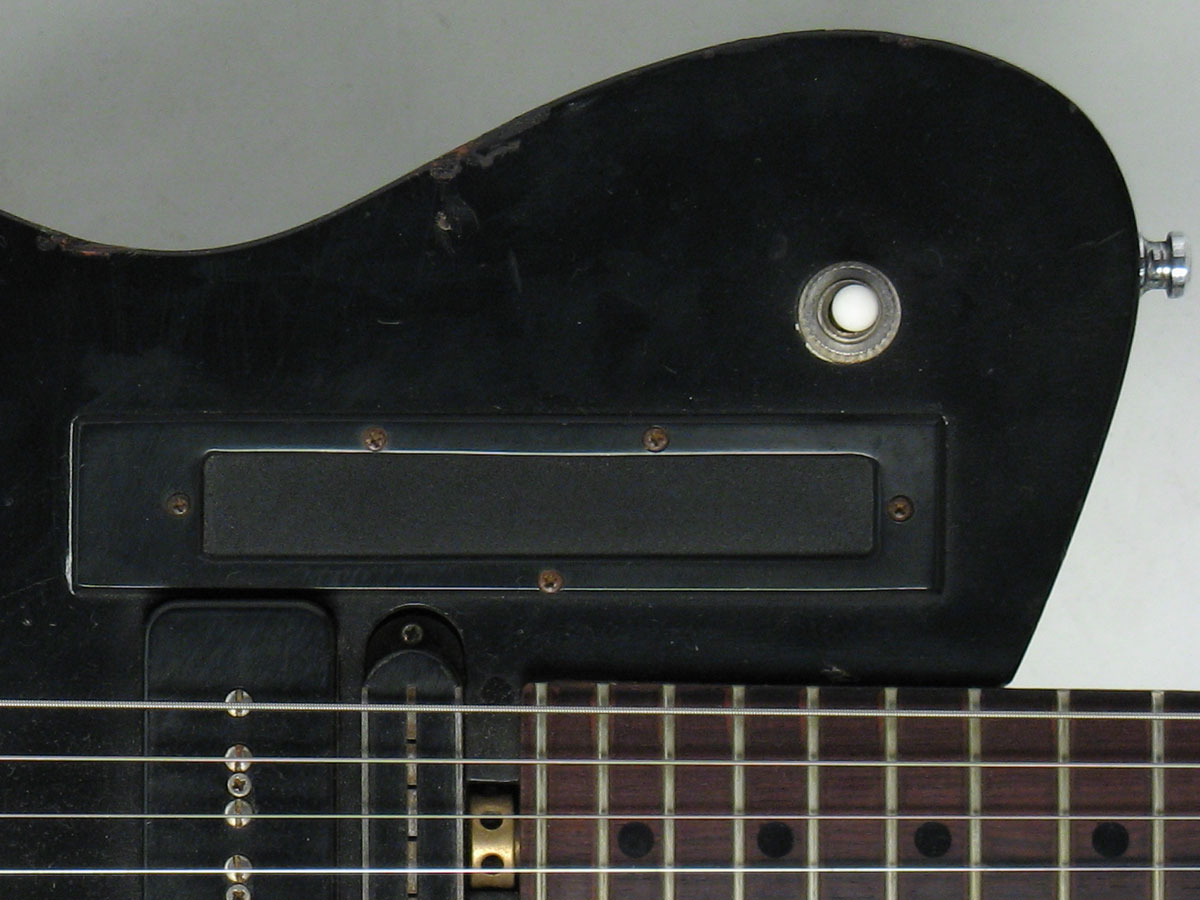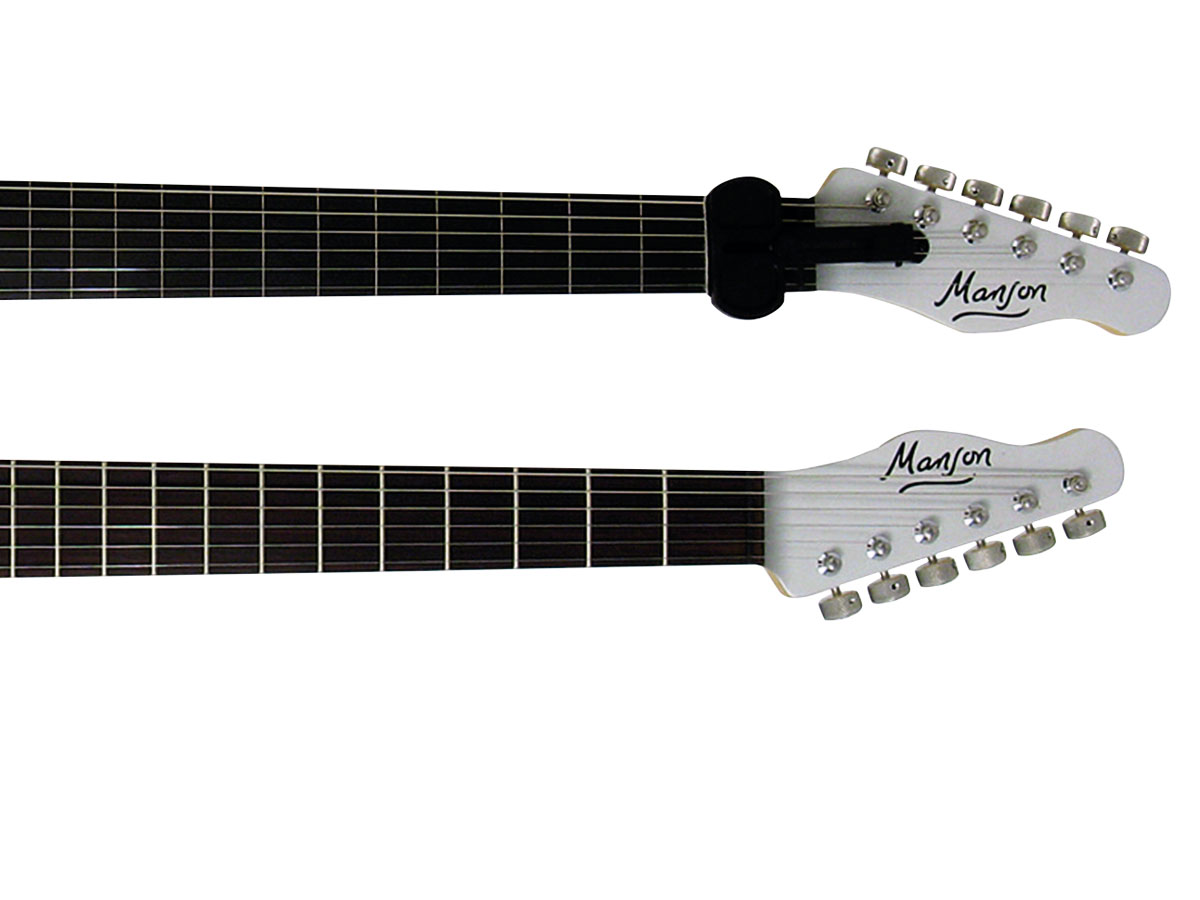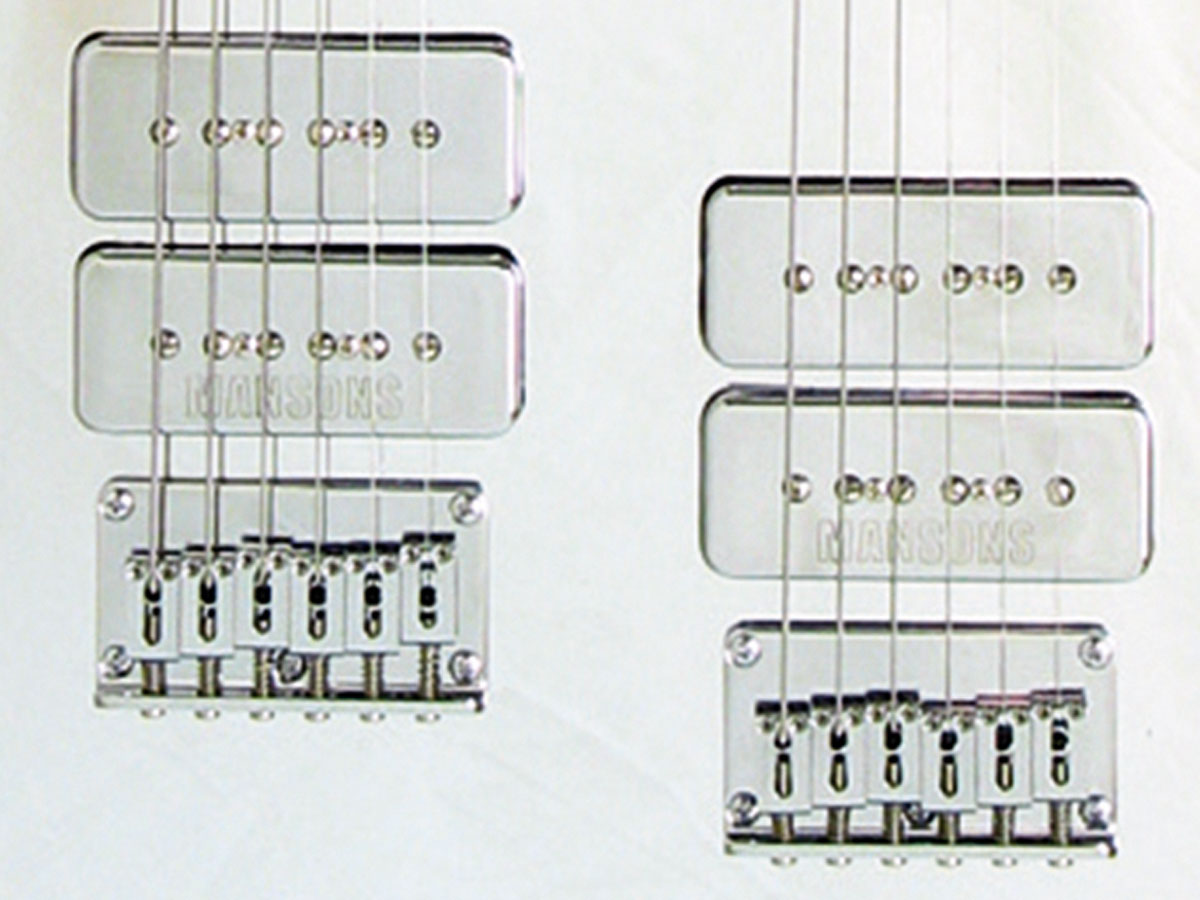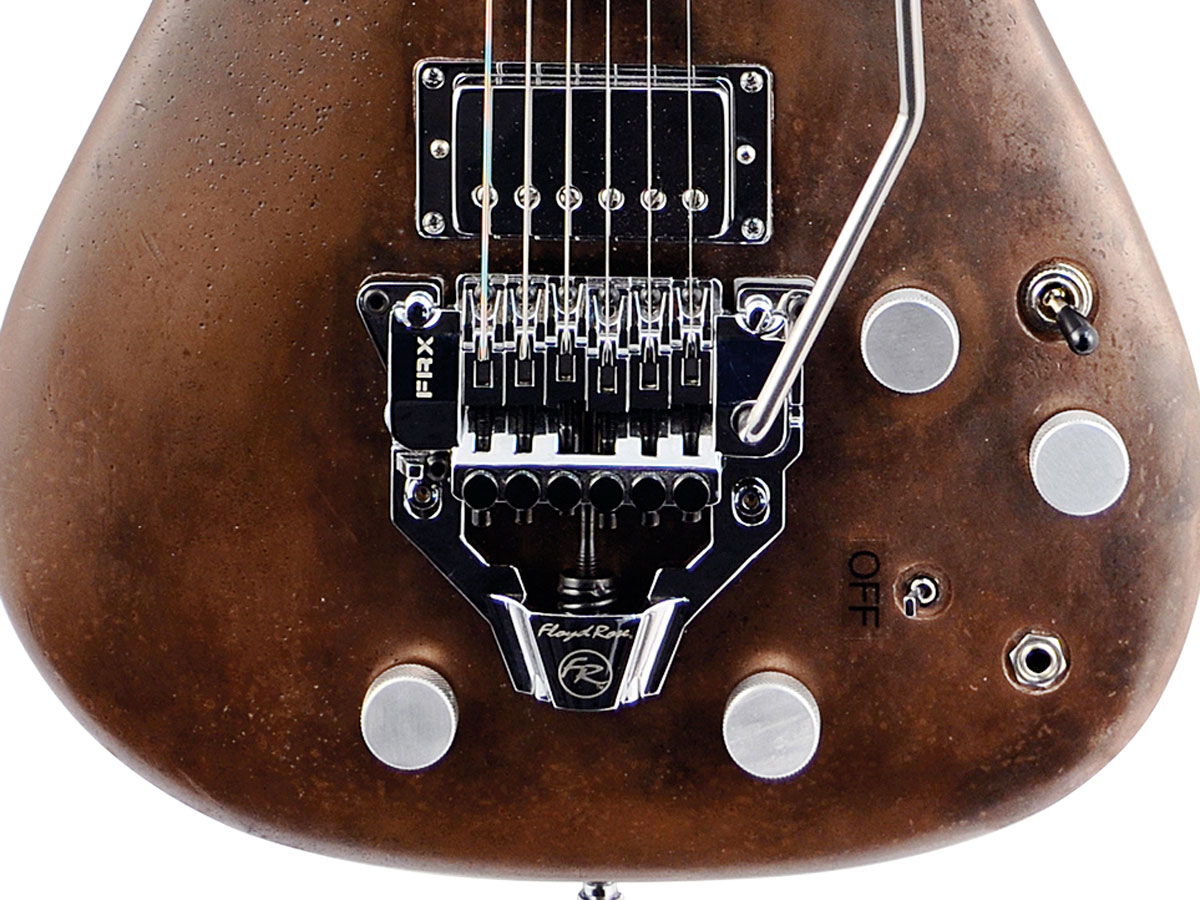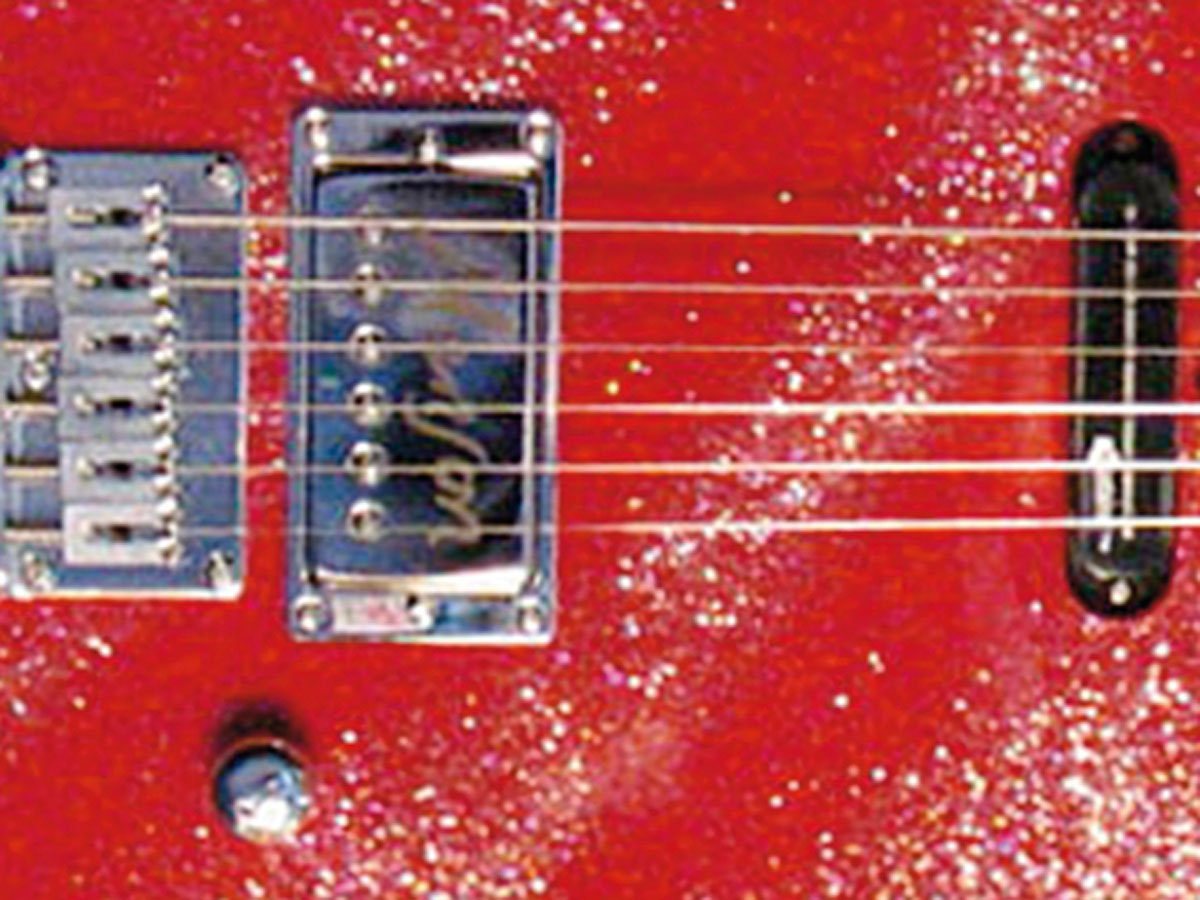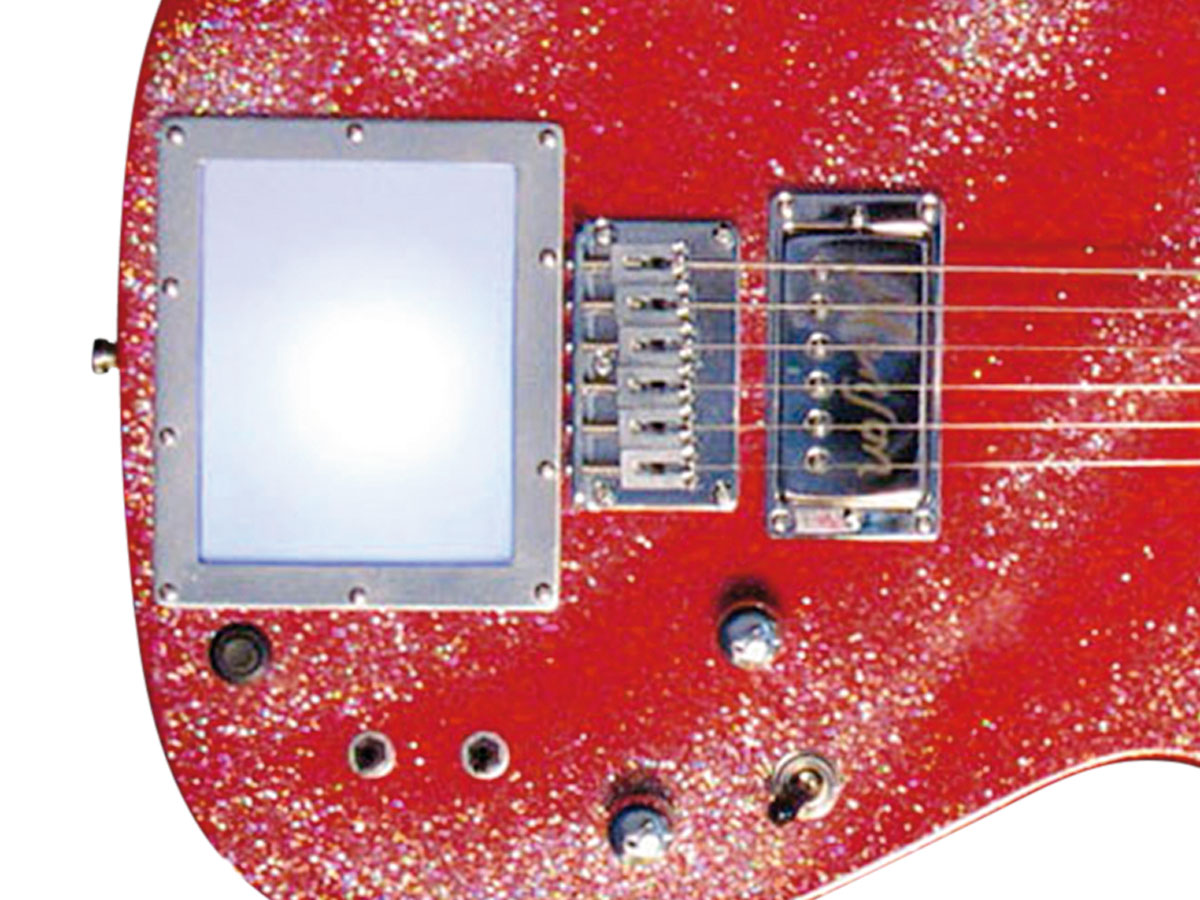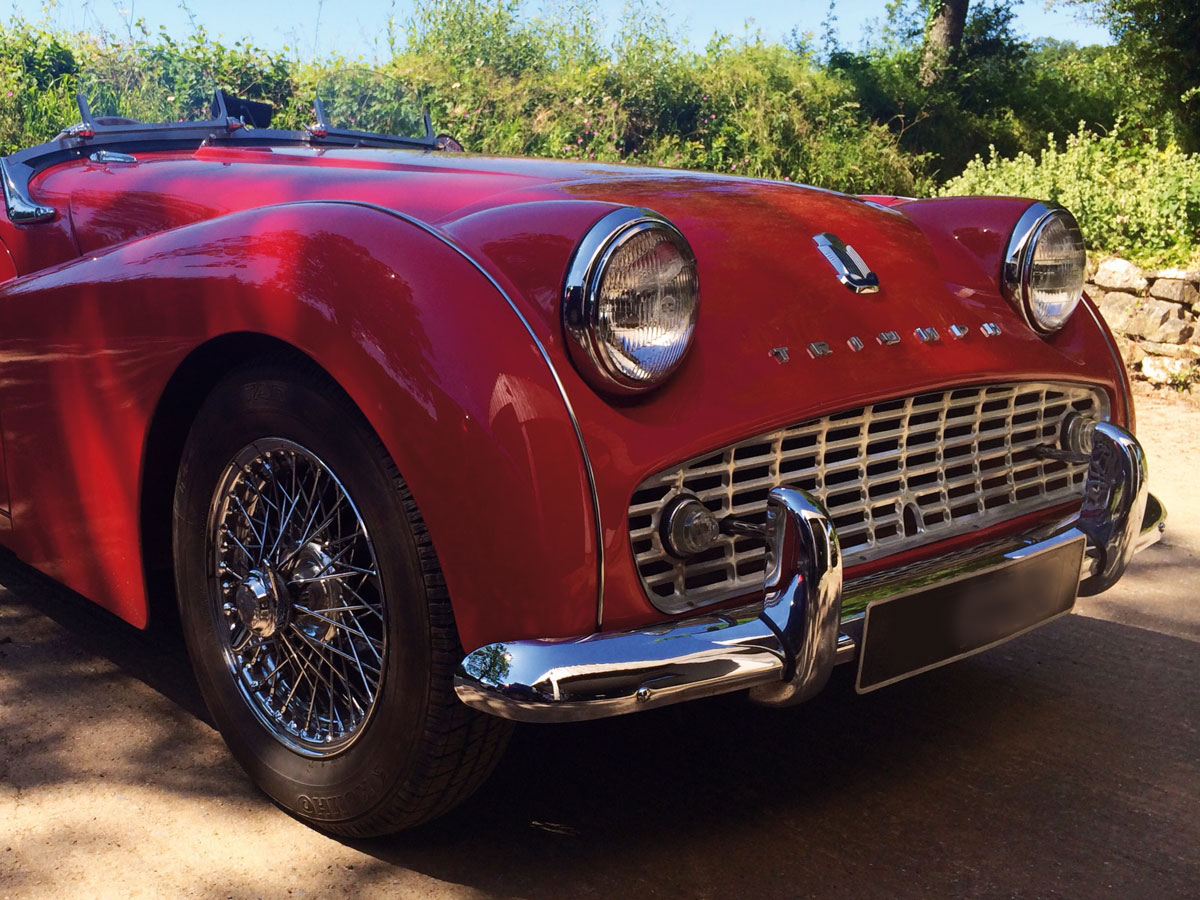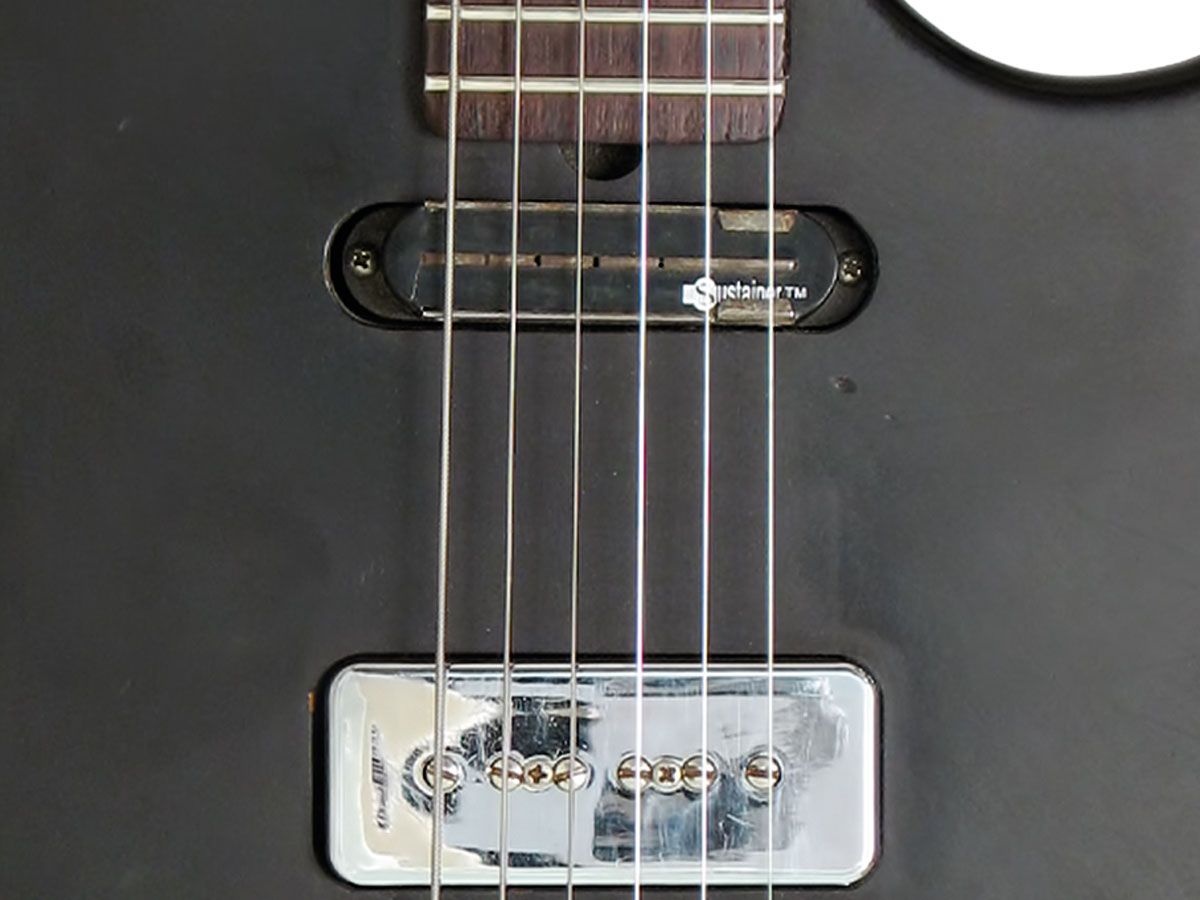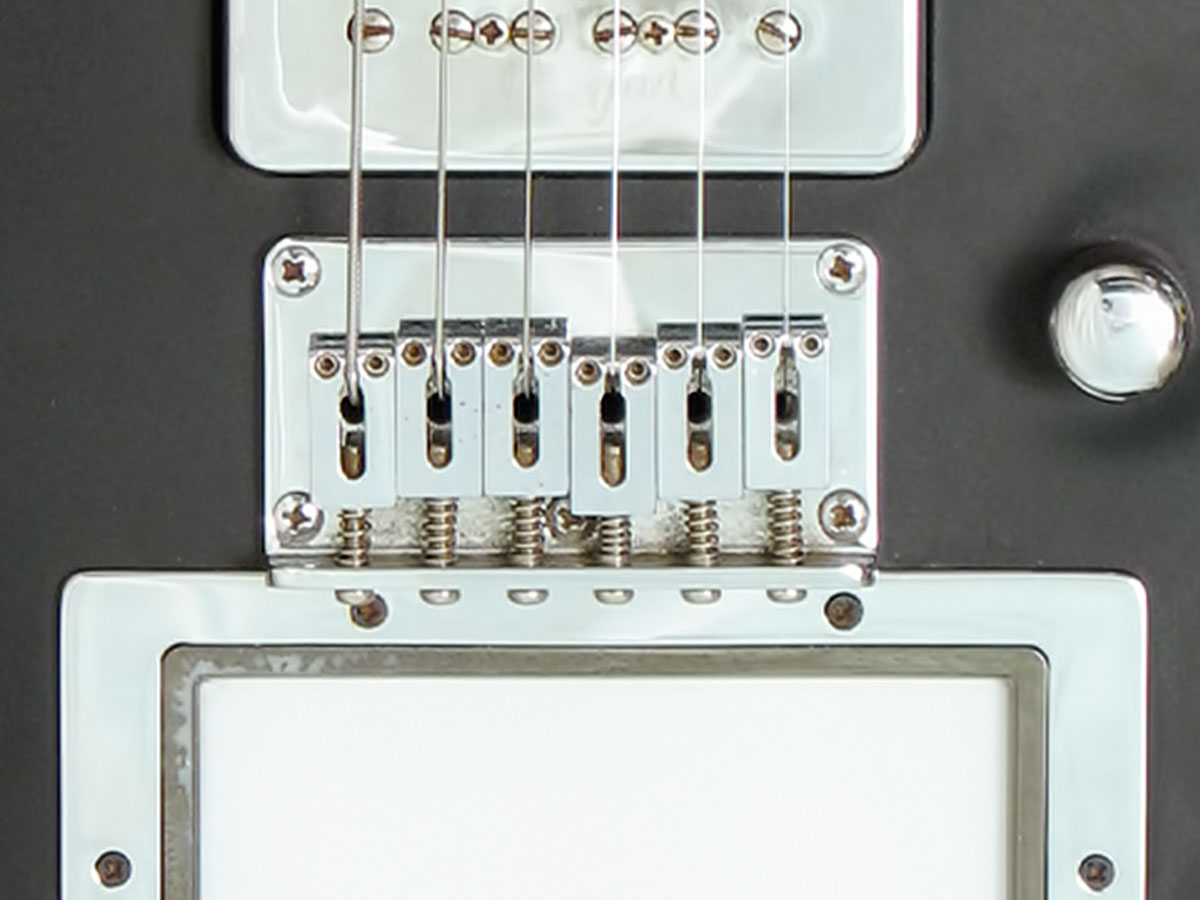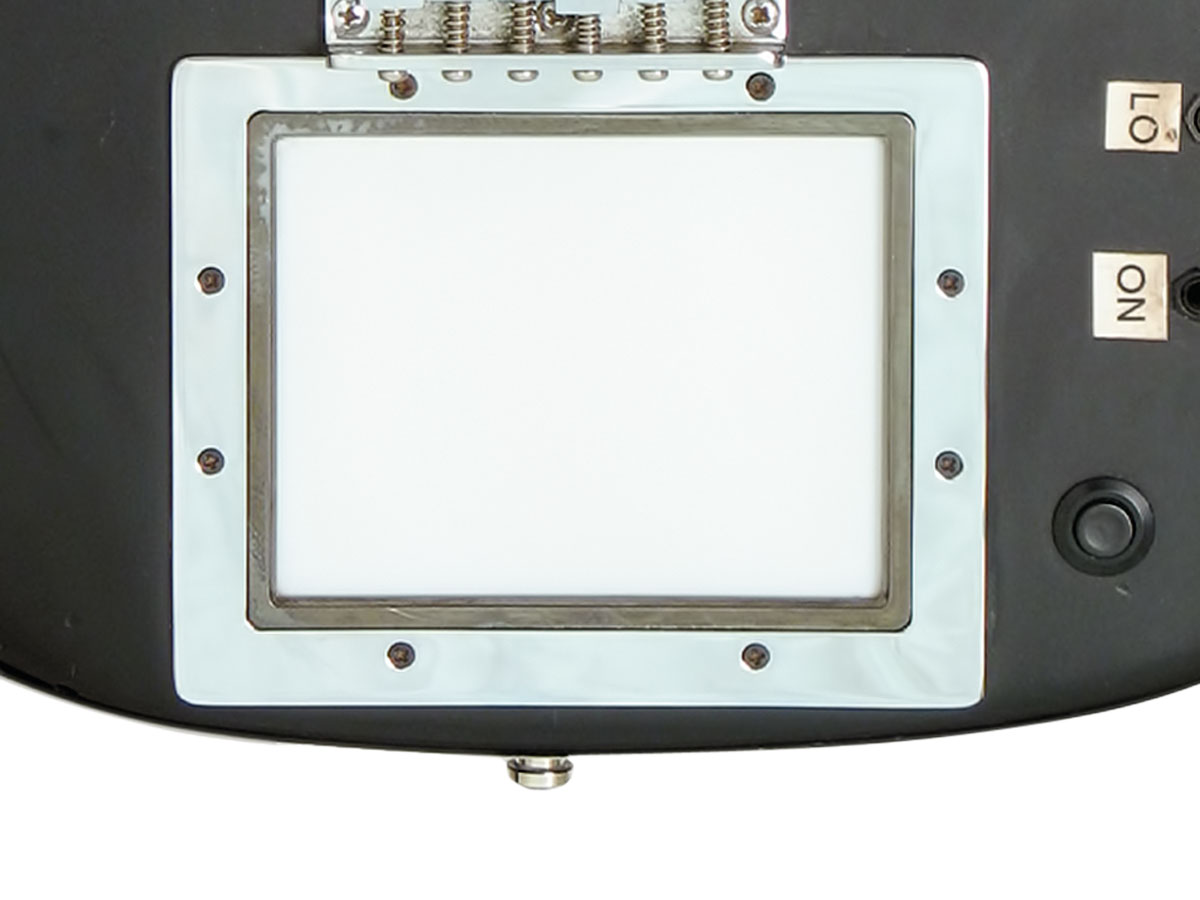Matt Bellamy's custom Manson guitars - in pictures
Lasers! Kaoss Pads! Keytars?! Hugh Manson spills the beans...
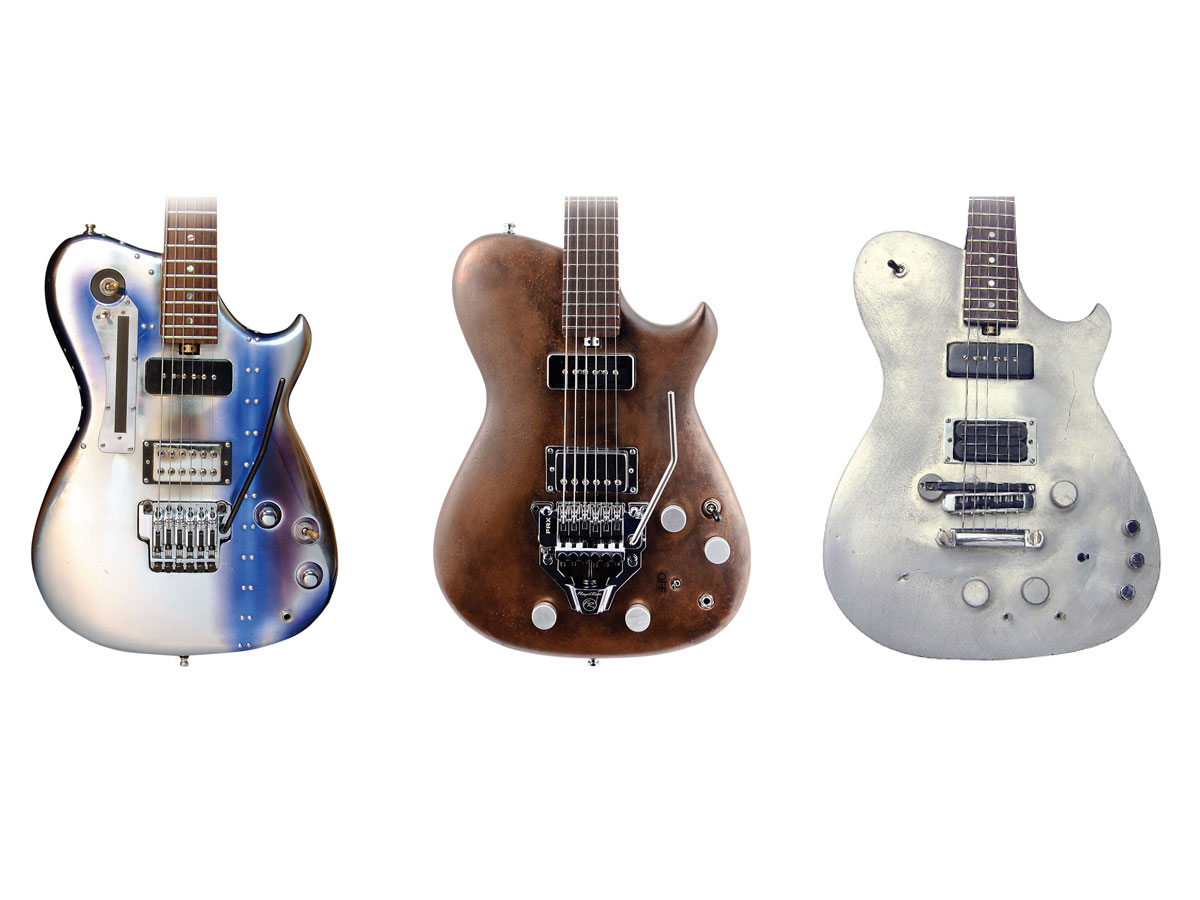
Introduction
Since frequenting Manson Guitar Shop in Exeter as a teenager, Muse's Matt Bellamy has become famous for his tech-loaded, forward-thinking approach to the electric guitar.
"The guy that comes in and says, 'I want you to build me a Strat' - what is the point?" - Hugh Manson
The man behind the shop, brand and the actual guitars is Hugh Manson, one of the UK's most respected luthiers, who has created dozens of custom-made, tricked-out guitars for Matt Bellamy since the first metal-clad 'Delorean' in 2001.
"The guy that comes in and says, 'I want you to build me a Strat' - what is the point?" Hugh tells TG. "I can sell you a perfectly good reissue of a Strat, how am I going to improve on however many million have been made already? Our challenges lie elsewhere."
Proof of this philosophy is Hugh's staggering body of work - assisted by electronics whizz Ron Joyce, and Manson's luthier Tim Stark - for Matt Bellamy. For every guitar, there's a story, so to celebrate the release of Muse's new album, Drones, we asked Hugh to let us in on the secrets behind the lasers, Kaoss pads, built-in effects and ambitious finishes...
Let's take a detailed look at some of the most imaginative designs the electric guitar has ever seen.
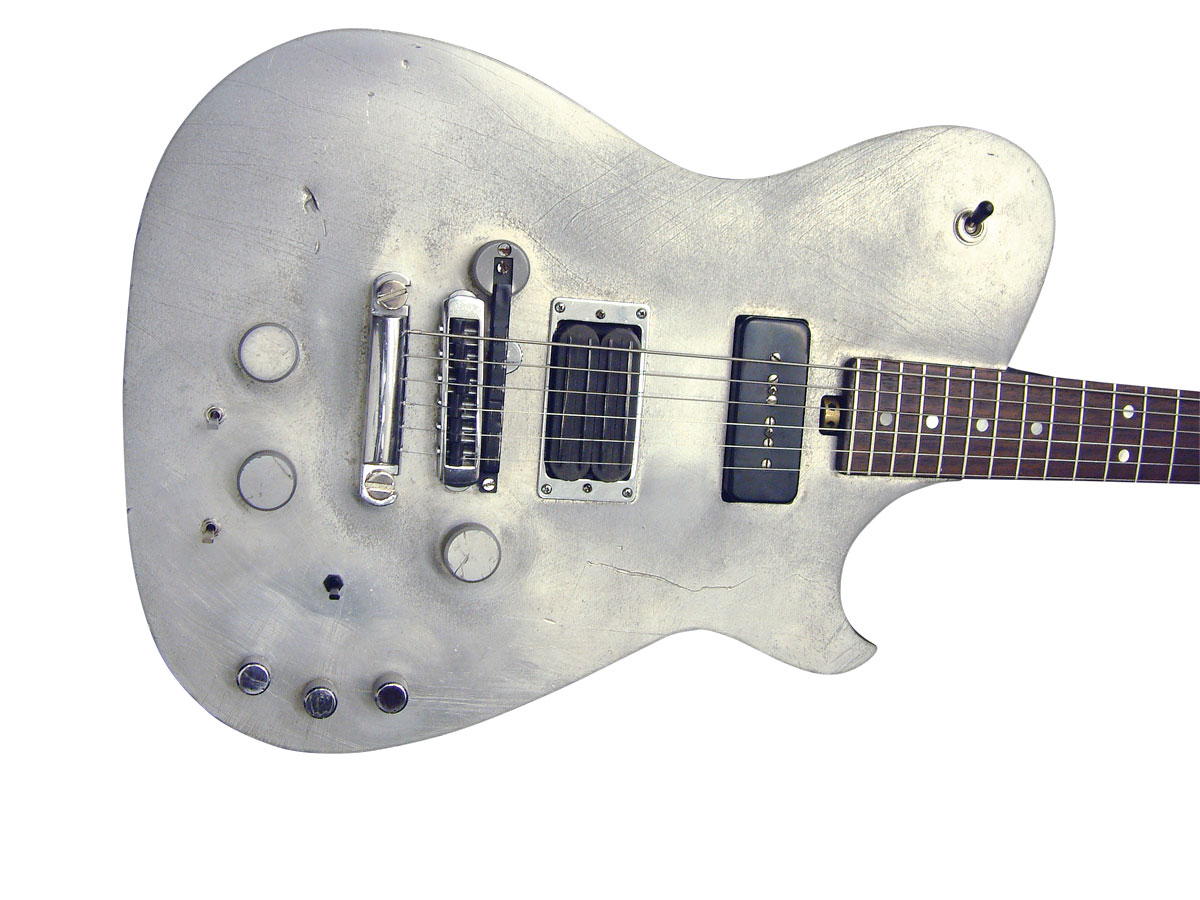
Delorean
The metal-clad, effects-loaded guitar that started it all...
"That is number one, numero uno! I think it was 2001. It was the first [custom] guitar. He and his family had been customers for years before that. Matt's dad is well known, and his uncles play, and most of the family is local [to Devon]. Matt used to buy amps from us, he bought a Soldano, a Matchless, a Marshall - he had quite a complicated rig, even in those days!
"I think the shape was pretty much left to me. He wanted a visual statement that nobody else would have. It was drawn by me, on the kitchen table as usual! I showed the drawing to Matt, and we changed a few things, nothing dramatic, and then made it.
"The Delorean was also the first guitar that I had clad with aluminium"
"The Delorean was also the first guitar that I had clad with aluminium. The trouble with working on your own in a workshop is that you don't get any third-party input. Once in a while, you need other people's opinions. So I took it into the shop, and at that point it was really rough - covered in file marks - and it looked really rough.
"By pure fluke, Matt was in the shop that day, so I showed it to him: 'Here you go, it's a work in progress.' At the time, I was thinking, 'How am I going to polish this? It's going to be an absolute nightmare to bring it up to a mirror finish,' which is what I'd assumed he wanted. He looked at it and said, 'That looks great, just like it is!' And I went, 'Ah, fantastic!' That saved me a lot of time!
"So it remained with its industrial finish, and as it had no coating, just bare aluminium, over time, it's corroded quite nicely and has become quite industrial-y old-looking, with that kind of steampunk vibe to it.
"It's not too bad [for noise]. In the last few years, we've discovered that Sustainers don't appear to work as successfully with metal-clad guitars. If anyone can explain that to me, then that'd be something, but there you go! Apart from that, no real problems. You've got your own screening there already - the whole guitar is effectively one whole piece of negative current!"
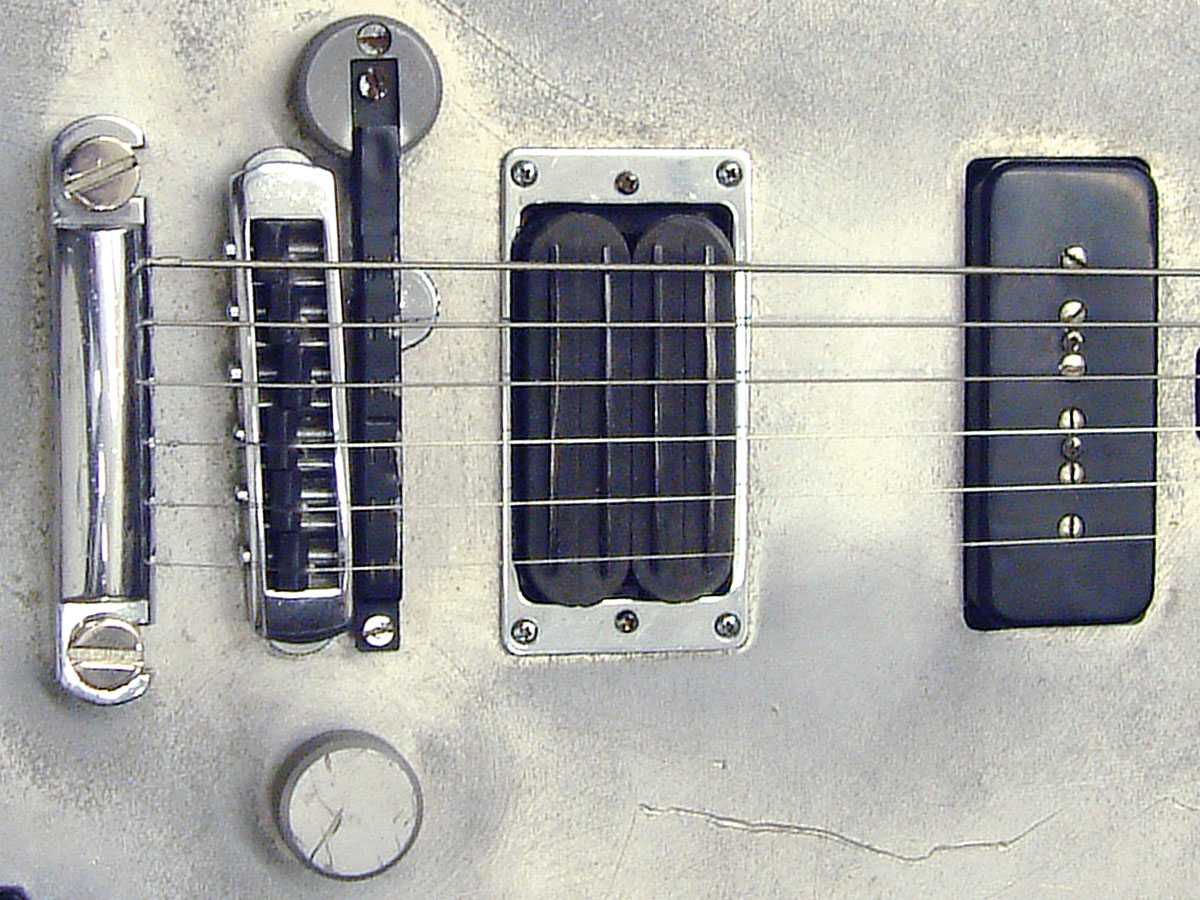
Custom electronics
"There are loads of electronics here. Pickup-wise, it's got a P-90 in the neck, and the Kent Armstrong Motherbucker at the bridge.
"It had the piezo bridge system running through our own preamp, and then the Roland GK [MIDI pickup system]. Then, effects-wise, there was the Fuzz Factory and a Phase 90 in it"
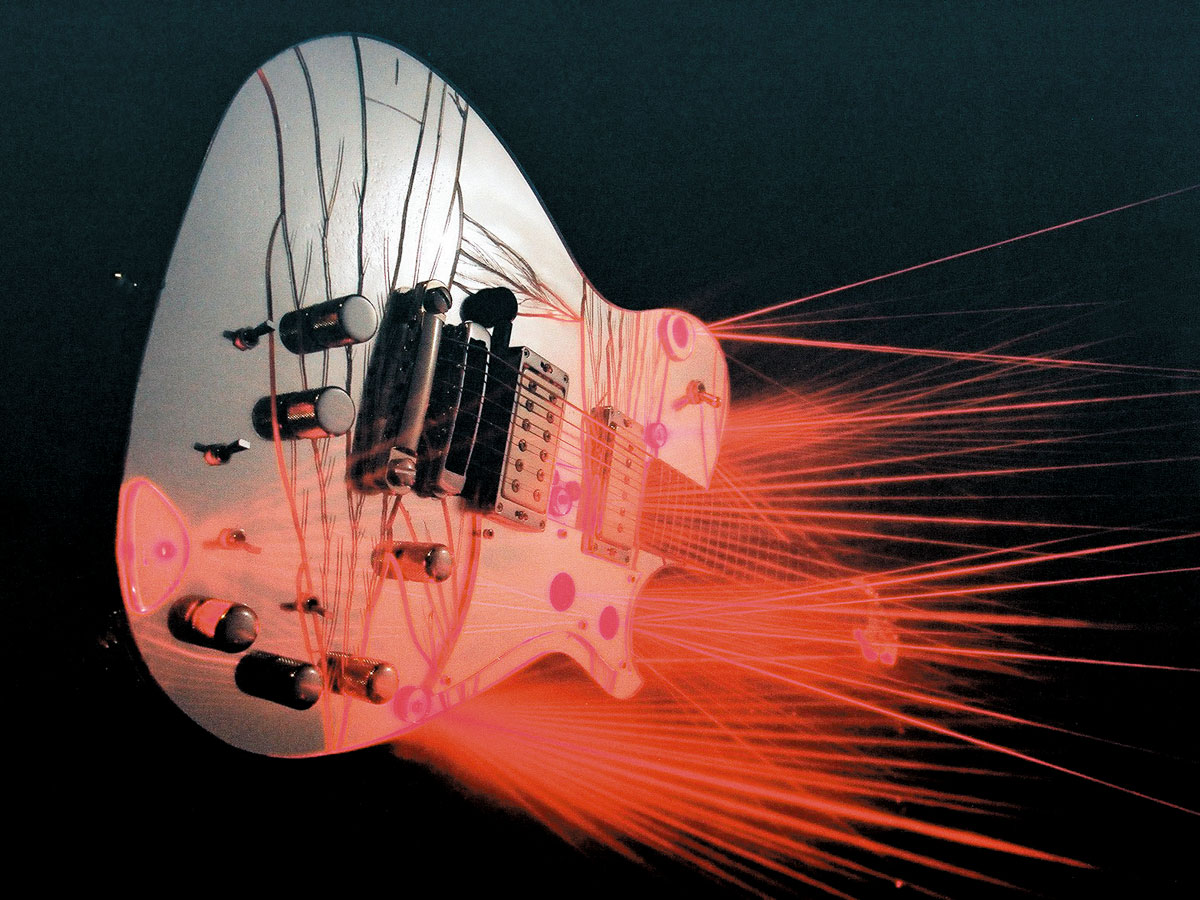
Laser
What's better than a Delorean? One that has lasers in it!
"The laser one was an idea I had when I was driving from London back to Devon, and you go past Heathrow airport. I saw the planes coming in to land with the lights on and I thought to myself, 'Ah, that's what you need, you need lights in the guitar.'
"I realised that LEDs weren't really powerful enough for stadium gigs... I thought, 'Lasers!'"
"I realised that LEDs weren't really powerful enough for stadium gigs, because if you're further back than five rows then you're never going to see the lights on the guitar. I thought, 'Lasers!' So, we fiddled around with some laser pens, then found a supplier for the lasers and stuffed loads in the body.
"We put them through things called gratings, which split up the laser beam into patterns. They were connected to a velocity device, so the harder you hit the strings, the more beams come on.
"It worked pretty well; the only trouble with the guitar is that it did become pretty heavy because of all of those laser devices in there. But Matt liked it, he used that one quite a lot. It's all part of the theatre. Spec-wise, that one is pretty much identical to the Delorean."
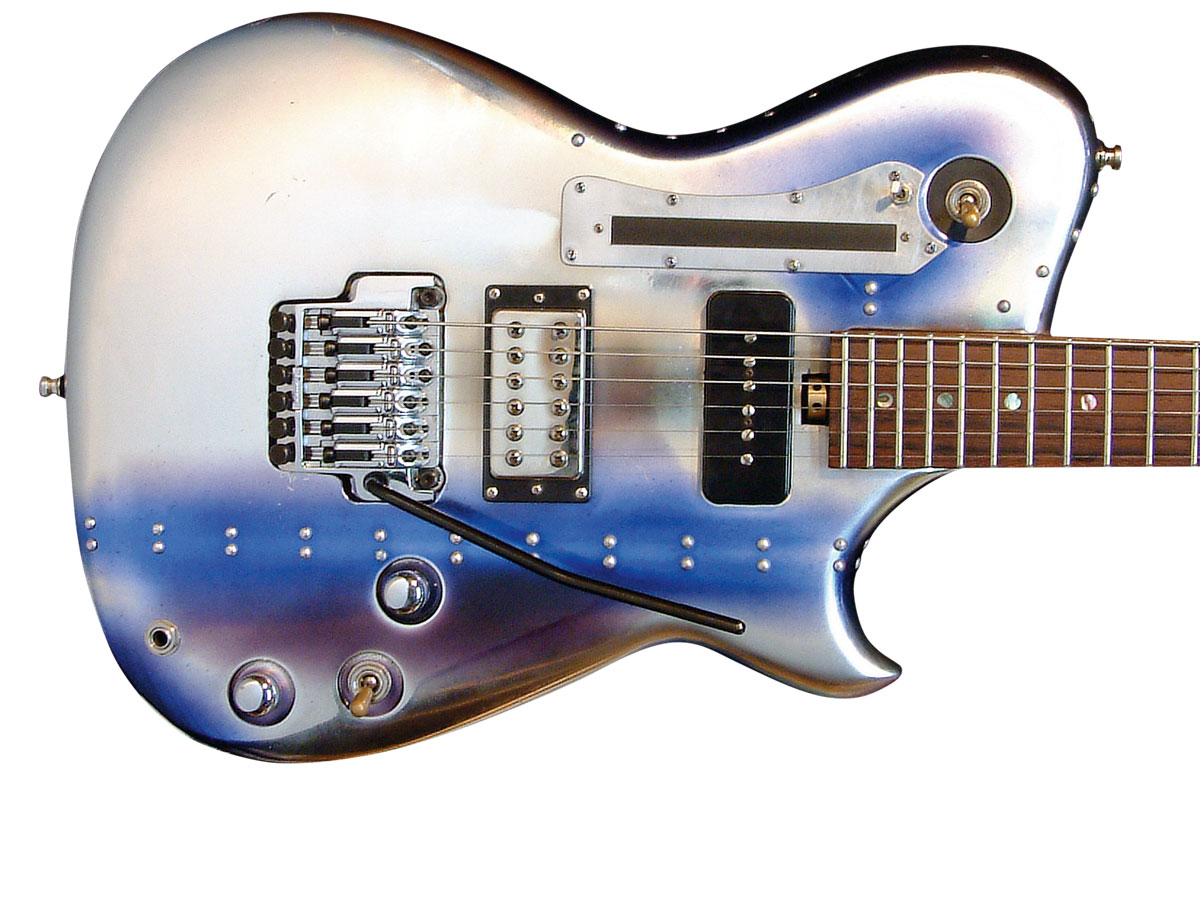
Bomber
How an aircraft inspired a guitar body...
"The Bomber [is my favourite]. The history of that one is quite amusing. Matt wanted a six-string guitar with a Floyd Rose on it. It was ludicrous timing, about four weeks, and he wanted it to be chrome.
"It turned out to be great, and I think it's many people's favourite guitar"
"In the middle of all of this, I was literally building a new shop with the help of some builder friends of mine, so I'd almost stopped guitar-making for about two months. So I made the guitar, then sent it away to get it chrome-plated.
"It came back and we had four days until the deadline, and it was absolutely awful. I decided to get the airbrush out and try to make it look like something that's distressed. I went to the local scrap merchant, who specialises in ex-military stuff, and he had a packet of aluminium rivets dated 1945.
"I drilled a few holes, put the rivets in, masked it and managed to spray it a purple-y hue, like aged aluminium. It turned out to be great, and I think it's many people's favourite guitar."
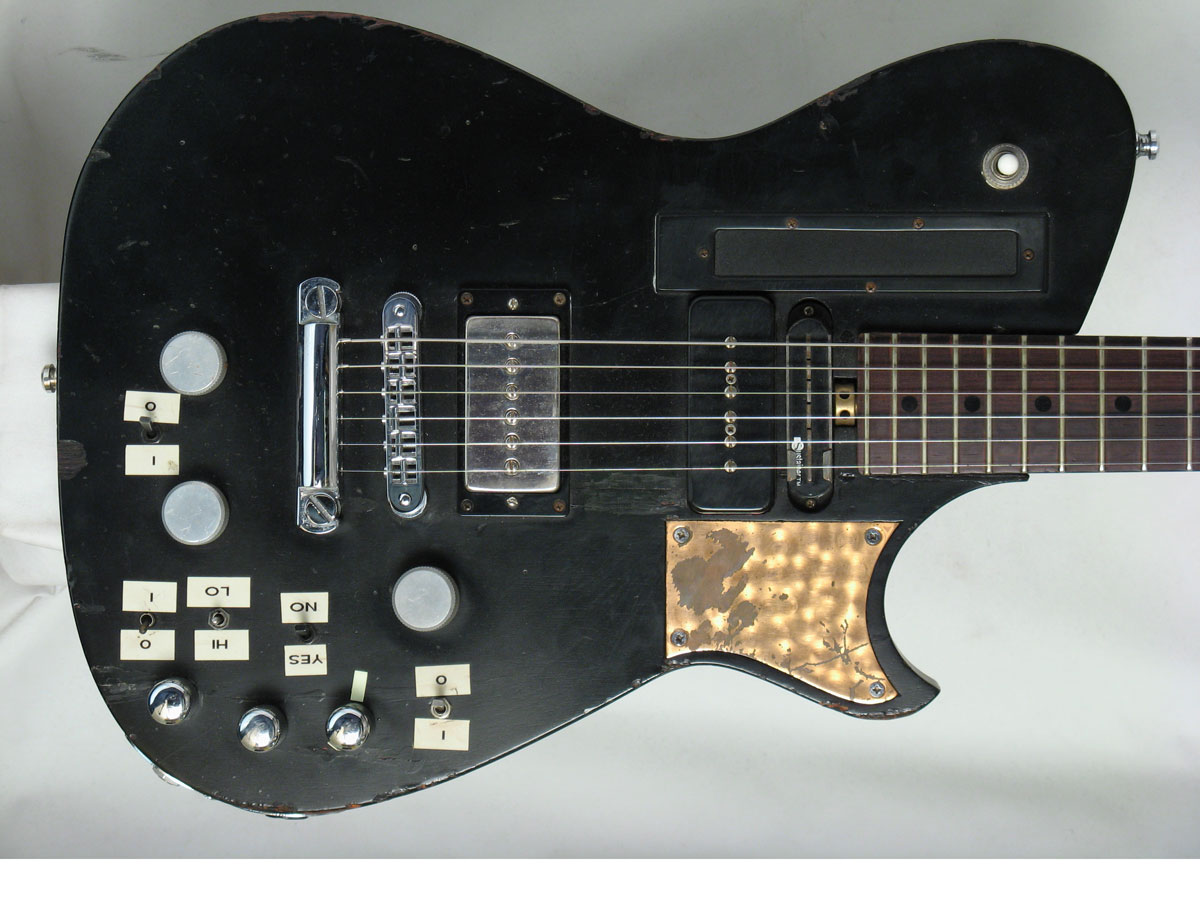
Blackie
The technology-loaded effects monster...
"That was the first one to feature the ribbon controller. He came along and said, 'Can you build a Whammy pedal into a guitar?' Obviously, you can't, because of the current draw, plus they run on AC, so that's out of the question. So we thought, 'Let's make a MIDI controller and it can be controlled from the guitar'.
"Matt wanted something tactile as apposed to something rotary or joystick-y"
Matt wanted something tactile as apposed to something rotary or joystick-y. He wanted something he could run his finger up and down, so the obvious thought was the thing on the side of a keyboard! So good old Ron Joyce, who does all of our sophisticated electronics, came up with that.
"It had everything imaginable in it, too! It had a Fernandes Sustainer, a piezo bridge, a Z.Vex Fuzz Factory and a Z.Vex Wah Probe. It also had a kill switch, and LEDs in the side of the neck, all run from PP3 batteries.
"I'm given the order for the effects, it's pretty logical, but there needs to be some form of order to it, for various reasons. One is making each effect work to its optimum, but the other is noise. With that amount of wiring, you're asking for trouble, especially with things like the transformer on the Fernandes board. That's a hum device if you're not careful.
"This guitar's been smashed up! I think it's been smashed in half before, from what I remember. It's certainly had a hard life. But Matt loves that guitar, it's the one that he always goes back to."
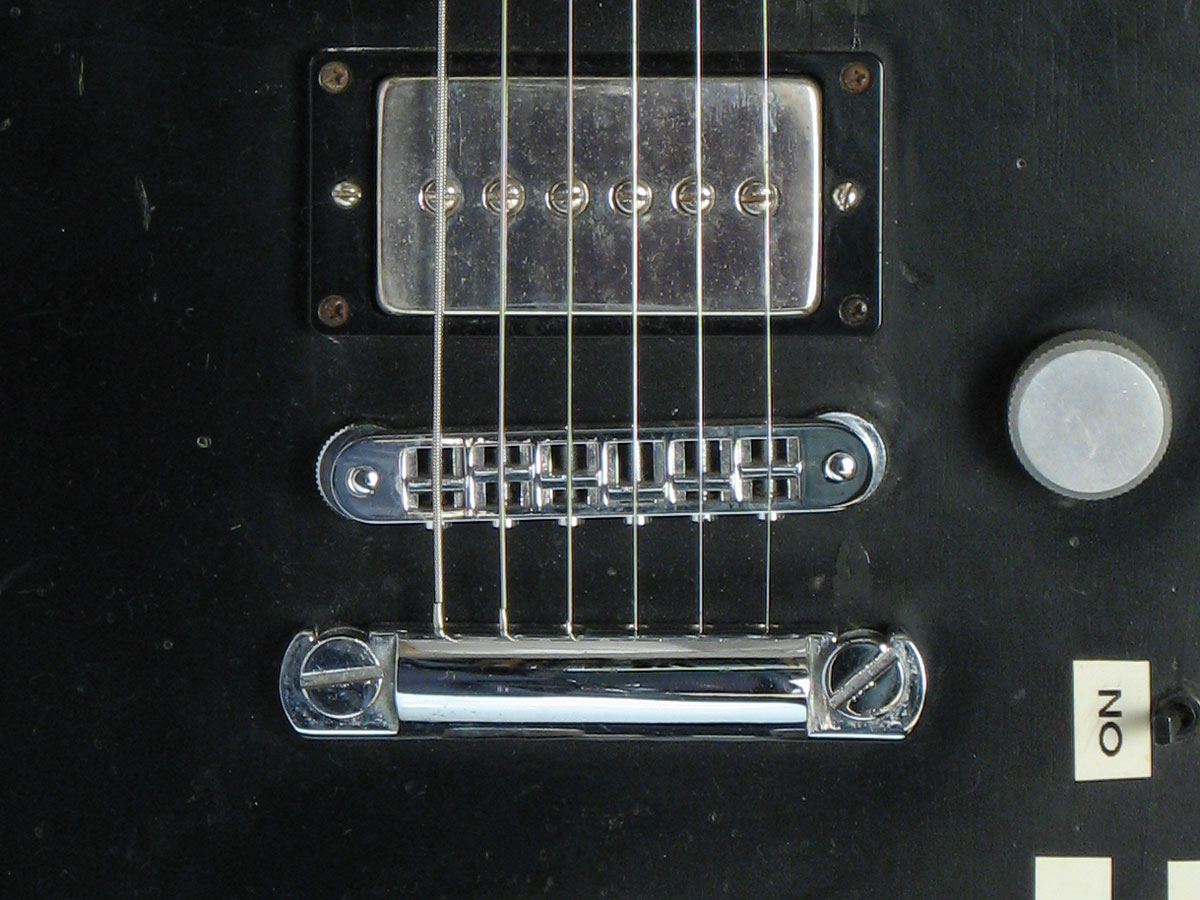
Magnetic, piezo and sustainer pickups
"[The Motherbucker - pictured] has sort of gone by the side now. They do powerful very well; it's like having two Hot Rails bolted together, but it's very difficult to get anything but a dirty sound.
"I've got a feeling that the pickup in that guitar has changed now to a Manson MBK-1. The acoustic preamp has also been removed, so there's no piezo."
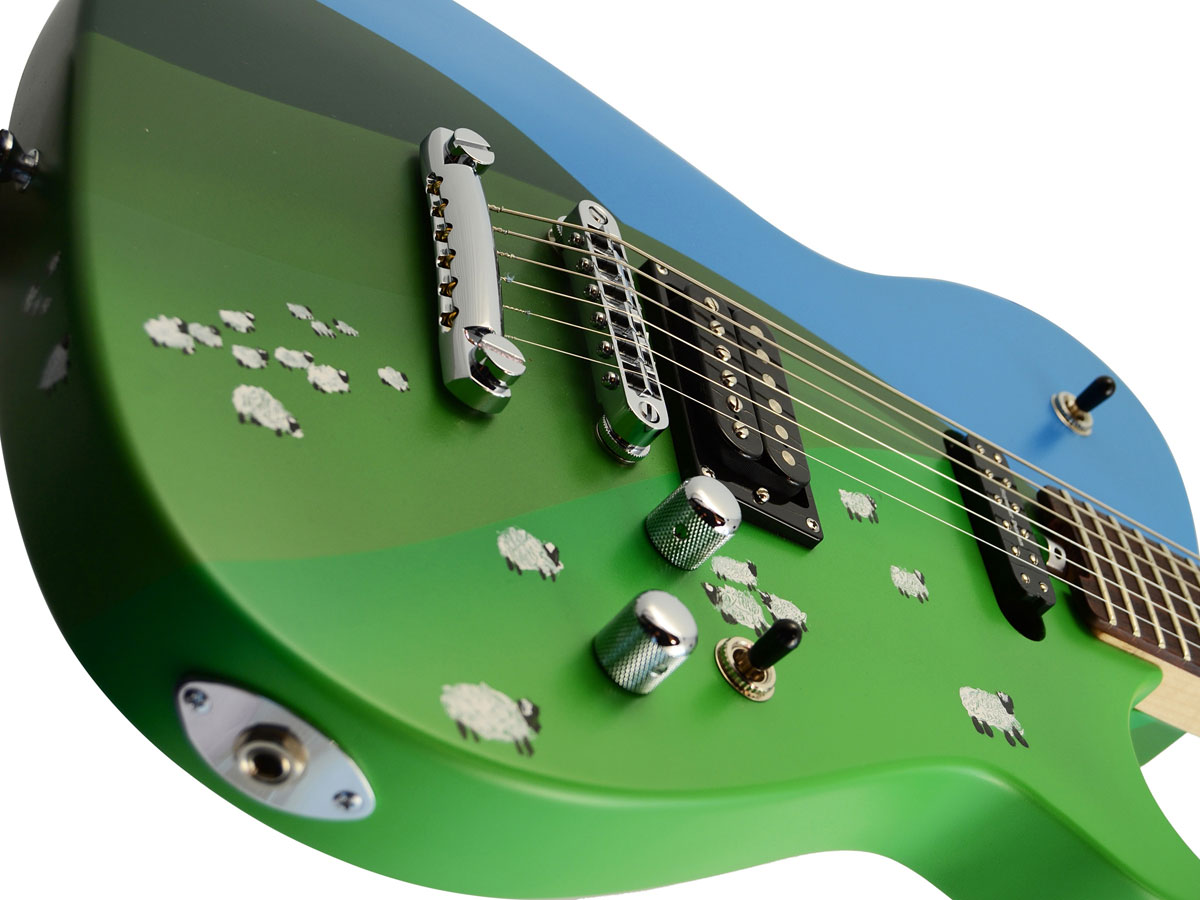
Sheep thrills
In 2014, Matt Bellamy's hand-painted Manson MB-1 'Sheep' guitar was created and auctioned for War Child, raising £10,272. Here, Hugh tells us how the project came about.
"I did the Devon scene, and Matt did the sheep!"
"That was fun! We took a guitar to the NAMM Show in LA one year, and Muse were playing there. So they signed it, and Adrian, who runs Manson Guitar Works, brought it back and auctioned it for charity and it made ¤60,000 for two charities. We thought, 'That's fantastic, we should try and do some more.'
"Matt rang up and mentioned he was doing something for War Child. It had to be art, so he decided to paint a guitar with a Devon scene and some sheep on it. So I did the Devon scene, and he did the sheep!
"It was auctioned for War Child and I think it made the most of all the things that were auctioned. There were some very influential musicians and artists that he was alongside raising money. So it was good, a fun project!"
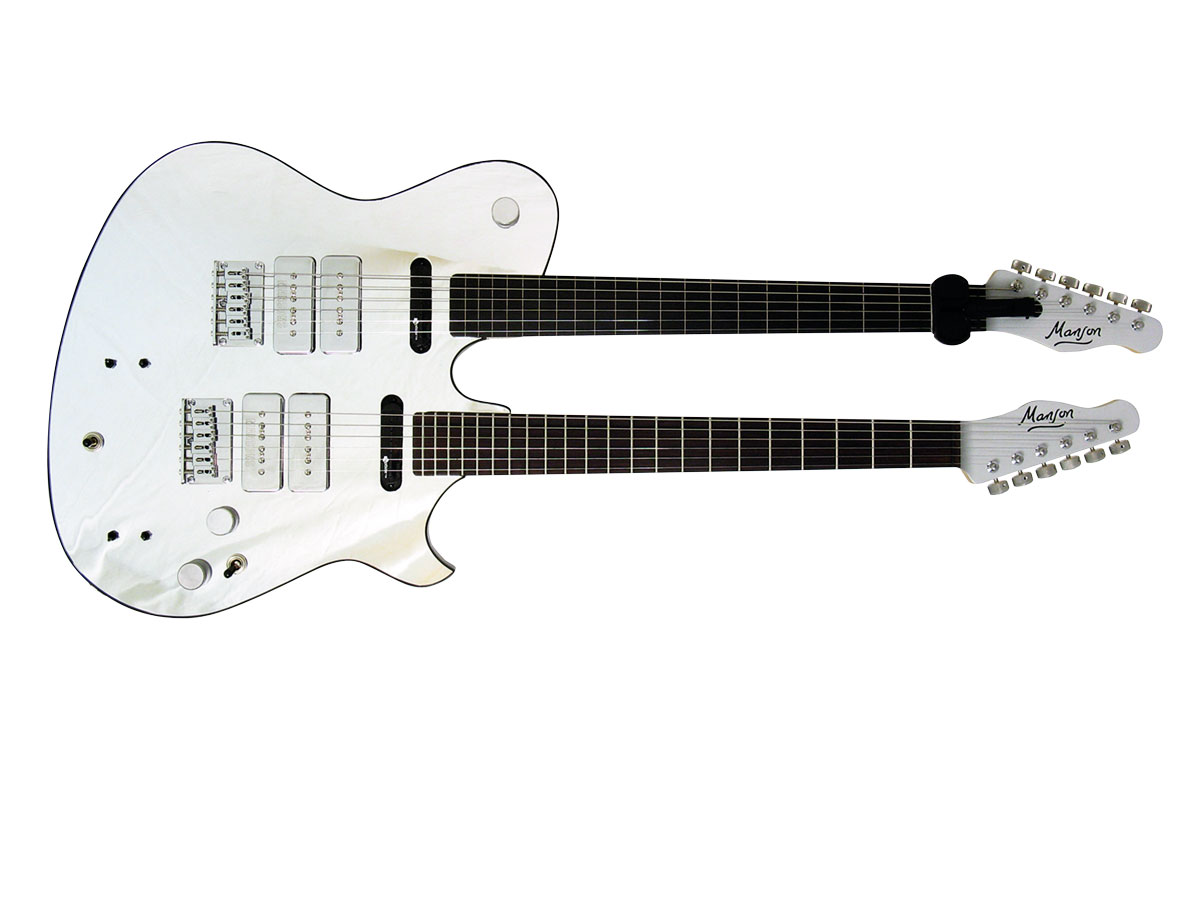
Doubleneck
Fretted, fretless and a whole lot of power...
"Matt ordered this instrument, and he was in a hurry for it, as usual! I was on tour with Them Crooked Vultures at the time, so I did a drawing, took a photo of it, sent it back to [Manson luthier] Tim Stark and he made it. That was a mirror-fronted doubleneck with fretted and fretless necks!
"Both necks had Sustainers, that was a very powerful pickup on there, too - two P-90s wired in series, so it really sent out a signal"
"Tim did a fantastic job on it. There's nothing new with fretless guitars - Patrice Vigier makes a fantastic fretless guitar - but fretless guitars are a little bit of a compromise. The wound strings work fine, as with a fretless bass, but the plain strings tend to sound a little clunky.
"Both necks had Sustainers, that was a very powerful pickup on there, too - two P-90s wired in series, so it really sent out a signal. It also had a dampening device on the fretless neck. It's on the headstock and it would hinge down to just around the finger-side of the nut. It's quite important to have that, otherwise you end up with all sorts of notes happening behind where you're fingering."
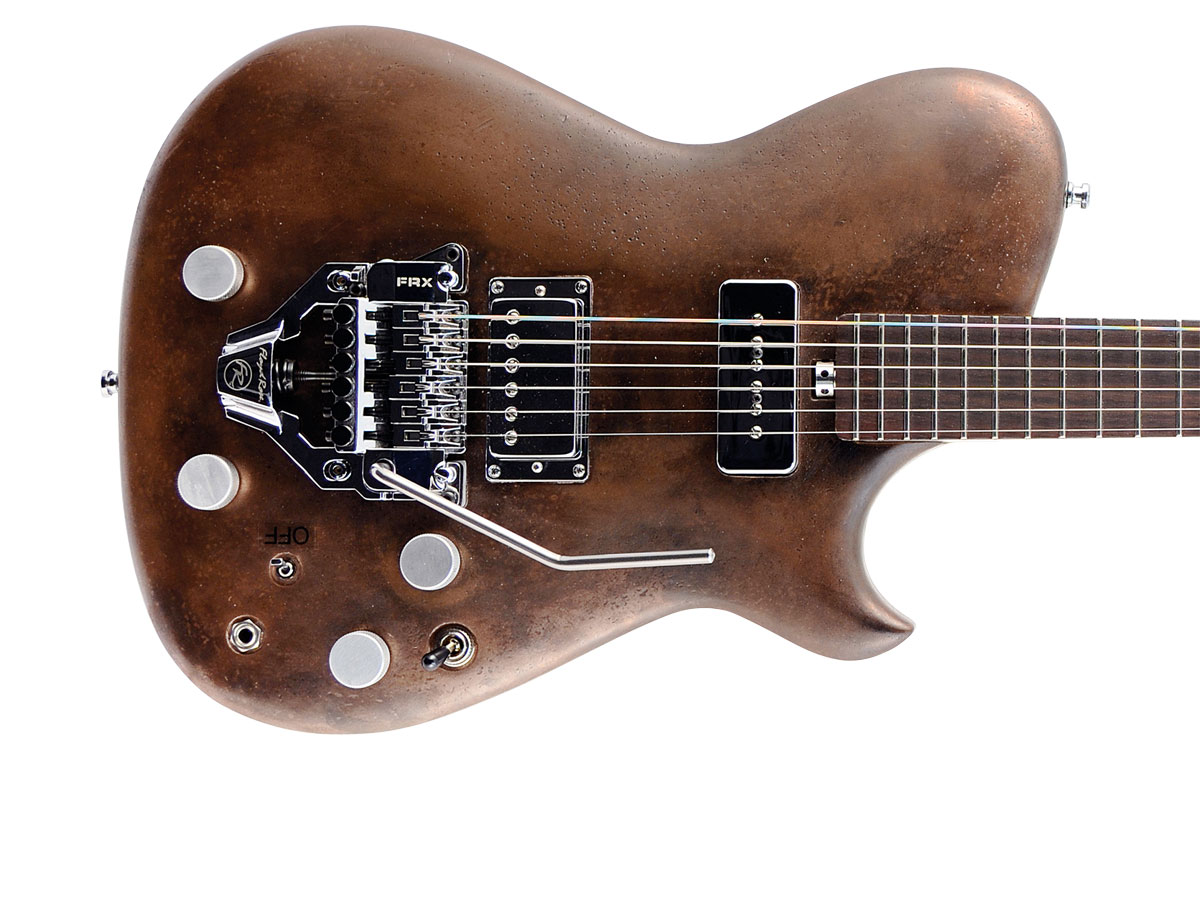
Copper Bomber
The metal guitar with the latest Floyd design...
"This is new. It's what we call the lozenge shape; it's reminiscent of the Bomber, but more rounded-off with no sharp edges, and it has a copper-paint finish. It's very strange material! Sometimes you mix it up and it goes off before you get it on the guitar, other times you put it on and it's two days before it dries.
"Once copper paint is dry, it's amazing, you can practically hit it with a hammer"
"You can't spray it - it's very messy and smelly and goes on really, lumpy. Then you have to flatten it all back and put another coat on and so on. Once it's dry, it's amazing, you can practically hit it with a hammer. It is like liquid metal.
"We're also doing a couple with the traditional Floyd, which requires routing. All this stuff has to be built like a brick shithouse, because Matt's really rough. He throws them, he holds on by the tremolo arm and waves it around, so what we make has to be really tough. The traditional Floyd, particularly the titanium version, is a really good tremolo. A decent bridge makes all the difference to the sound - it's the crucial part of the guitar."
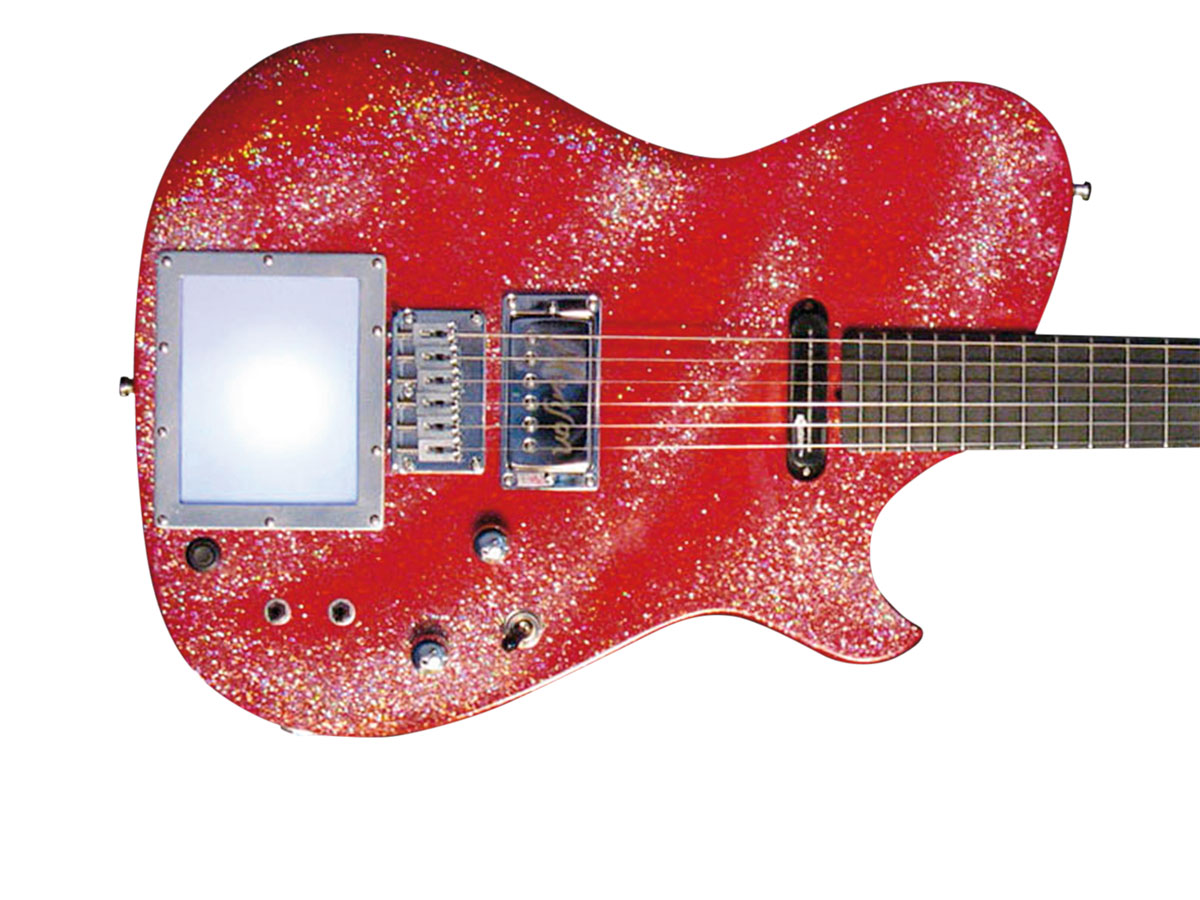
Red Santa
A Triumphant paint job meets futuristic MIDI control...
"The Red Santa was a favourite until it got smashed, but then we did build a replacement. That red came about when I was building the first one and I'd done all the woodwork and I had no idea what colour he wanted. So I rang him up and he said, 'Red'.
"The only can of red paint I had in the workshop was a spare can for my 1961 Triumph TR3A"
"So I went into the workshop, and the only can of red paint I had in there - again, this was the usual rush! - was a spare can for my 1961 Triumph TR3A. I sprayed it with the red paint and thought, 'It looks a little boring,' so I got the holographic glitter out and went mad with it, sent a photo to Matt and he said, 'Yeah, looks great!'.
"So that red came about purely accidentally, because it was the only can of red paint on the shelf, and because I've got a vintage sports car!"
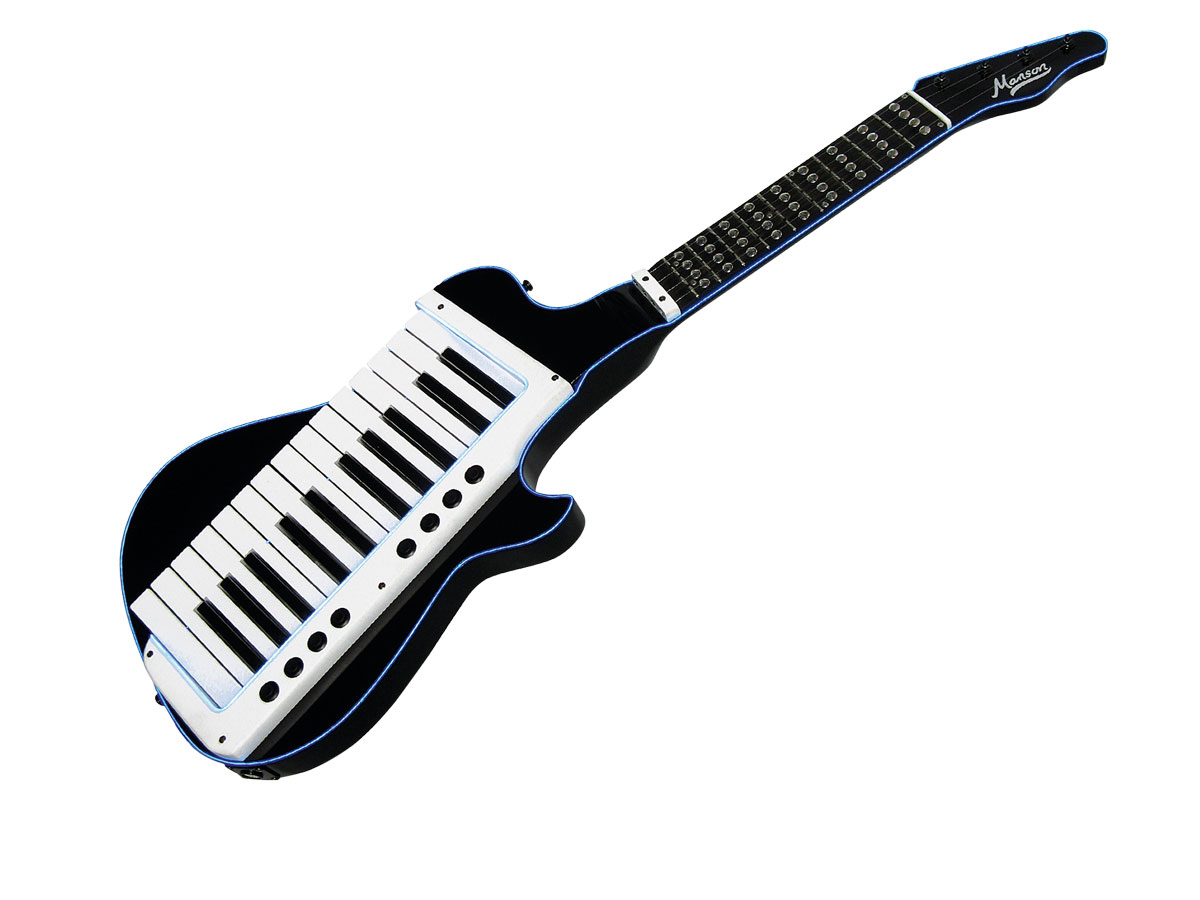
Keytar
Inventing and constructing an entirely unique instrument? No problem!
"The keytar: that was an amazing piece of kit. So Matt says, 'I want to play a keyboard hanging around my neck, but I also want strings on it.' The keyboard bit was easy, we bought a MIDI keyboard and took it apart.
"When the string touched the pad, it would create a trigger"
"But the left hand was way more complicated. He wanted an instrument that he was used to playing, ie, with strings on, which would trigger MIDI notes. So we came up with four strings, all the same gauge - I think they were 0.010s - tuned to any note.
"Between each fret was a little metal pad. When the string touched the pad, it would create a trigger. So we had to electronically isolate each string, and also cut the fret into four pieces with no current to the fret, then wire each little metal pad between each fret up. So under the fingerboard was a lot of wire! On top of that, he had the facility to take each note up or down by four octaves.
"So it was all quite complicated, then having produced that, he said, 'Can you put a glowing blue line all around the outside?'"
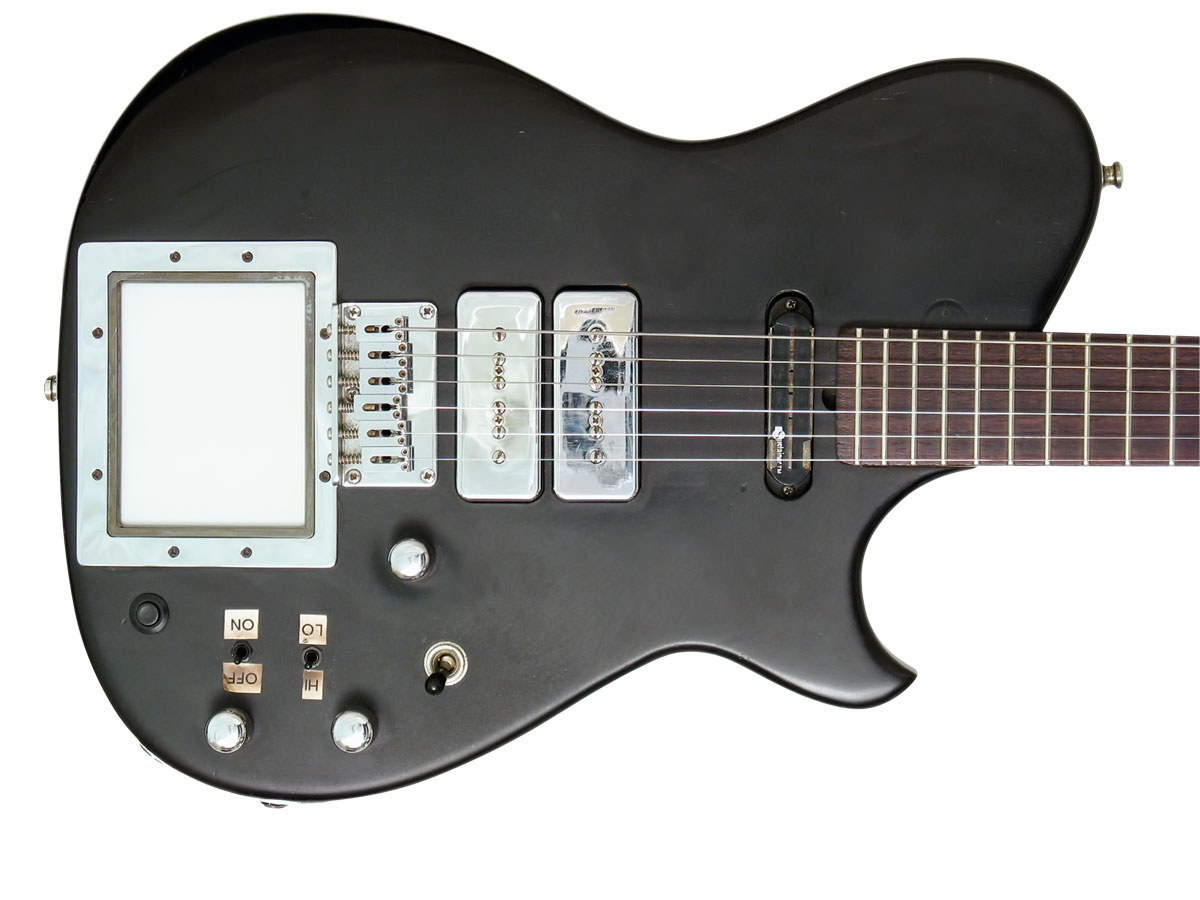
Kaoss
The first guitar to cause MIDI-controlled Kaoss...
"That one has the Sustainer, and two P-90s next to each other, wired in series - which basically gives you one massive pickup with a big output. It's a very particular sound, you need to like that sound. It's also the first one to have the X-Y pad in it.
"We built our own micro-processor. The only bit of a Korg Kaoss Pad that exists in the guitar is the piece of glass"
"So, usual story, Matt comes along and says, 'Can you build a Kaoss Pad into a guitar?' Somebody else had done it before, I think it was Beck, but it was done with gaffer tape and cables. We built our own micro-processor. The only bit of a Korg Kaoss Pad that exists in the guitar is the piece of glass. Nothing else is anything to do with anything else, just the glass.
"So Matt asked if we could do it, and the answer is 'No.' First of all, it's too big, secondly the voltage is a problem, and thirdly, it's got about a million tonnes of extraneous rubbish you're never going to use anywhere in a guitar! So, I rang Ron up and said, 'Here, can you make a MIDI controller to control a Kaoss pad in a guitar?' And he said, 'Yeah, get me a Kaoss Pad!'
"A couple of weeks later, he comes back with the mad-scientist approach: a couple of bits of Veroboard covered in paperclips and various things wedged in with matchsticks, and he's done it! A perfect working product.
"We've done loads of them since, but it will control many things other than a Kaoss Pad - anything that can accept MIDI. If it won't accept the control numbers, you can change them internally via a rotary pot. We have done some smaller ones for other people, with much smaller screens in."
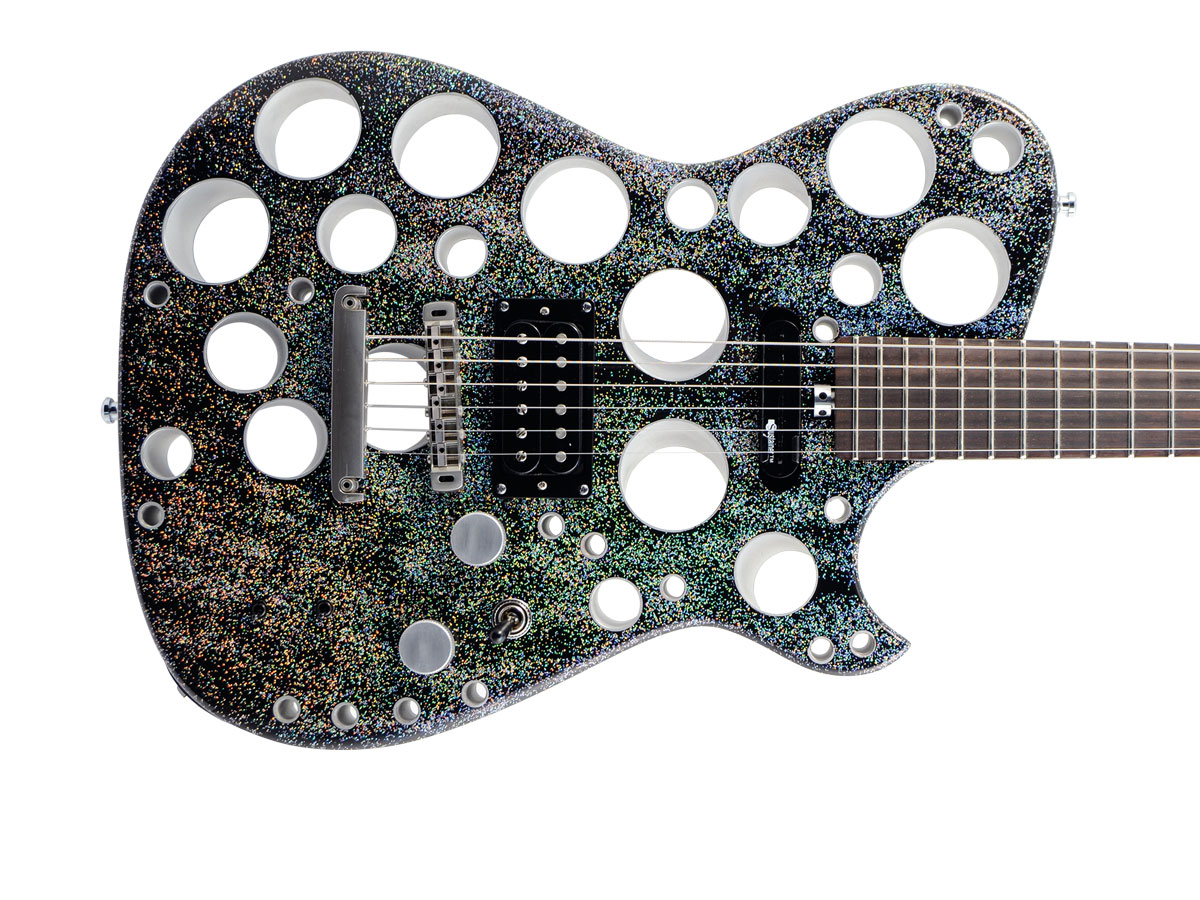
Silver Glitter Holes
Great architecture inspires a monumental guitar design...
"There are two of these. The world has only seen one so far, but by the time you read this, there will be two of them. I went to Barcelona for a long weekend and went to the Basilica, which is just the most amazing piece of architecture.
"I went to Barcelona for a long weekend and went to the Basilica. I was so inspired that I built a guitar with loads of holes in it"
"I went there and I was so inspired by the whole thing... So I came back and built a guitar with loads of holes in it, which seems a bit diverse, but the idea came from seeing the columns in the Basilica.
"It's the lozenge shape with lots of holes that are aluminium tubes. Then the body is lacquered with a holographic sparkle. They sound amazing, really mid-scooped. It's really resonant, because what's happening scientifically when you drill a load of holes is you're making the surface area of the guitar enormously greater. So it sounds louder acoustically, and the string performs differently.
"Every electric guitar is different, and by messing around with what I call the surface area of the guitar allows you to mess around with the way the string vibrates, thus what frequency is accentuated or not."
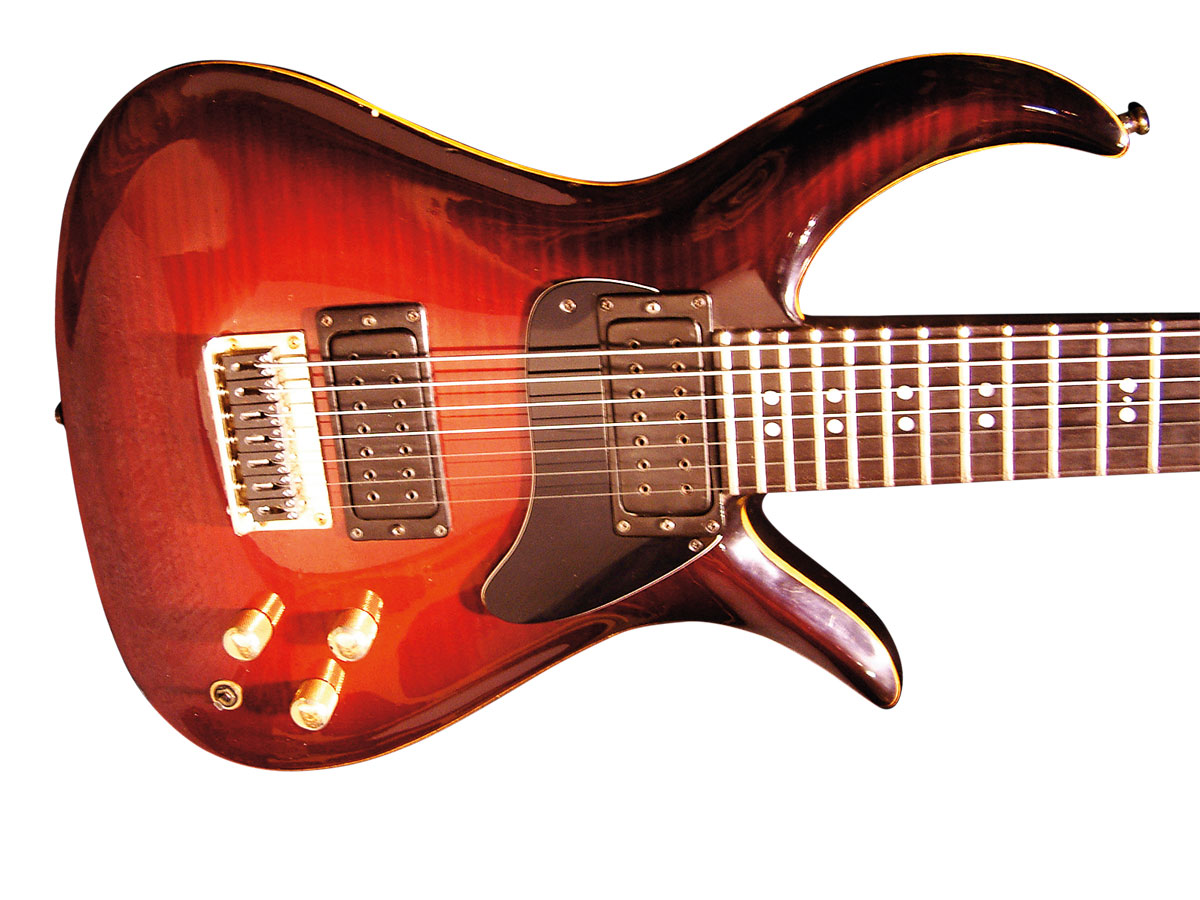
E7
How a second-hand guitar became one of Matt's rig mainstays...
"That was a guitar that I made for a jazz guitarist, to his design. It was a guitar version of the E-Bass that John Paul Jones plays.
"It wasn't built for Matt, he bought it secondhand!"
"This guy came in to order a seven-string guitar, and I said, 'What shape do you want?' and I think we had one of John's in the shop. So he chose that, I made it and he played it for a year or two, then decided he wanted to go back to six-string.
"He brought it back and I made him a six-string. So that guitar was hanging around the shop, Matt came in and said, 'I need a seven-string guitar. Like, now!' for some project.
"We only had two seven-strings: that one and an Ibanez. So he took that one. At the time, it only had one pickup in, and I think it had the piezo bridge as well. That guitar has that very particular sound that he uses - I think he tunes both the bottom strings to the same note.
"He hasn't dropped it or smashed it, which is lucky. But yeah, by coincidence, it wasn't built for him, he bought it secondhand!"
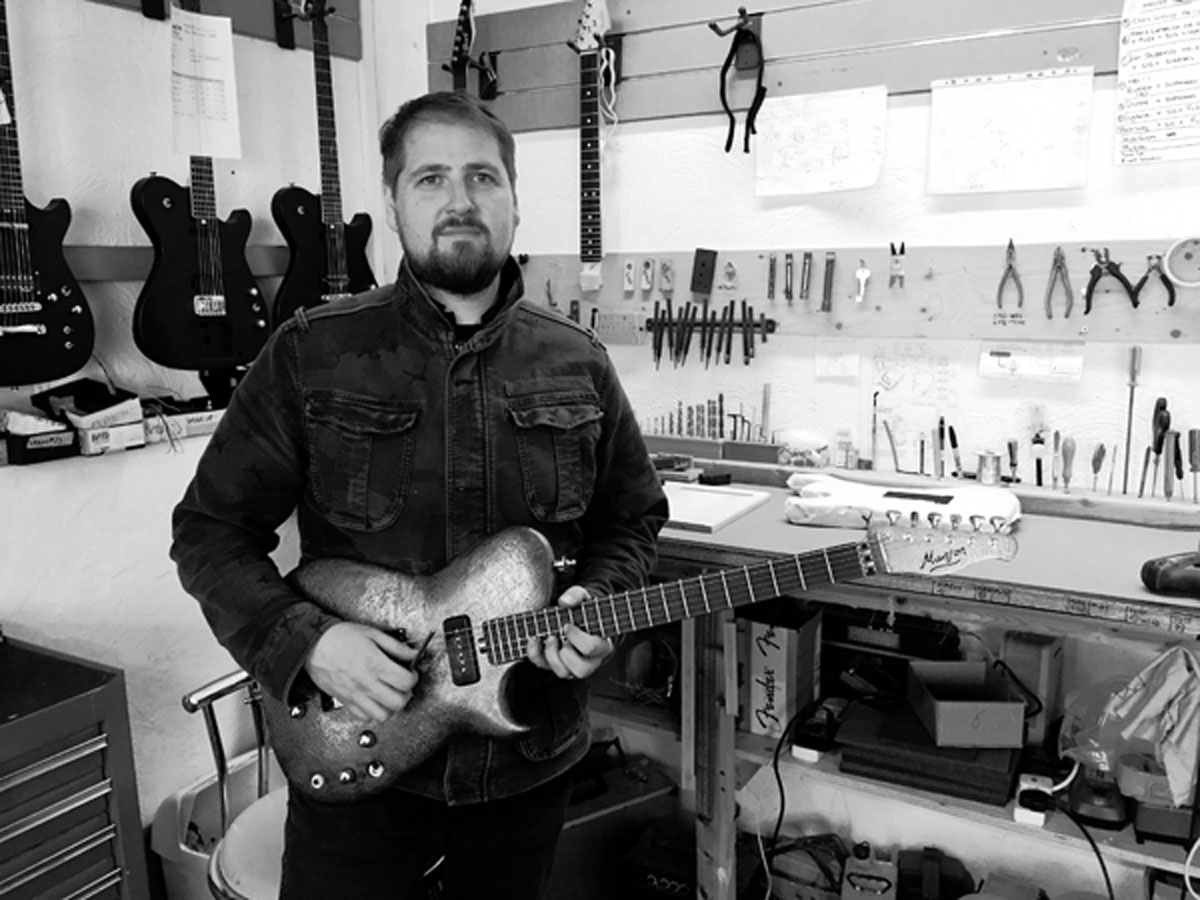
Hugh's right-hand man
If Hugh didn't build it, Tim Stark did!
How did your role at Manson's happen?
"I've been with Manson's for 15 years now. I started back in 2000. I was studying Musical Instrument Technology at the Leeds College Of Music, learning how to make and repair guitars. Hugh phoned the college asking for any possible techs who could replace one of his team. I applied, got the job, quit my course and have been here ever since."
"The two I'm most proud of are the doubleneck and the Copper Bomber" - Tim Stark
You've been involved with a number of builds for Matt Bellamy; which ones have been your favourites?
"The two I'm most proud of are the doubleneck and the Copper Bomber. Matt's great to work for. Sometimes you get lots of detail, but mostly it's just a basic theme or a few words. It's great he's open to ideas and allows me the freedom to come up with some interesting concepts. It's amazing to think I complete a guitar, ship it out, and a couple of days later, it's being played on a stage by Matt."
What has been the most challenging guitar so far?
"Build-wise, the doubleneck. Design-wise, the brief was pretty minimal: weight was a major consideration. I spent ages planning out lots of mini-chambers inside the guitar so it'd be light. But, I also didn't want to risk it being a lively guitar that could have been prone to feedback."
Have you made guitars for any other artists?
"It's been a great couple of years at the Works. I built a custom bass for Mike Kerr of Royal Blood. I loved doing that project. I'd become a big fan of theirs, so when the call came to make him a bass, I was blown away.
"I've also built a doubleneck for Nick Beggs of Kajagoogoo/Steve Hackett, Martin Barre of Jethro Tull, Baz Warne of The Stranglers... and I'm putting together something for Martin Grech, another artist who I'm a big fan of. I have to pinch myself that I'm actually doing this for a job!"
For more information about Manson guitars, including the Cort MBC-1 Matthew Bellamy Signature Model, visit www.mansonguitarworks.com

Stuart has been working for guitar publications since 2008, beginning his career as Reviews Editor for Total Guitar before becoming Editor for six years. During this time, he and the team brought the magazine into the modern age with digital editions, a Youtube channel and the Apple chart-bothering Total Guitar Podcast. Stuart has also served as a freelance writer for Guitar World, Guitarist and MusicRadar reviewing hundreds of products spanning everything from acoustic guitars to valve amps, modelers and plugins. When not spouting his opinions on the best new gear, Stuart has been reminded on many occasions that the 'never meet your heroes' rule is entirely wrong, clocking-up interviews with the likes of Eddie Van Halen, Foo Fighters, Green Day and many, many more.
